HOOPER, CHARLES WESLEY (1836-1894). Captain, 33rd Infantry, United States Colored Troops (USCT), Companies G, I, and K; private, 1st New York Engineers, Company I. A native of England, Hooper enlisted as a private at New York City on September 16, 1861, and mustered into the 1st Engineers on October 11. At the time of his enlistment, he was 5′ 8″ tall with grey eyes, light brown hair and a light complexion. His muster roll indicates that he was on detached service in May and June of 1862 and on detached service at Hilton Head, South Carolina, in July and August of 1862 “on extra duty in charge of negroes by order of Maj. Gen. D. Hunter. Due U.S. for clothing overdrawn 83 cents.”
Civil War Bio Search
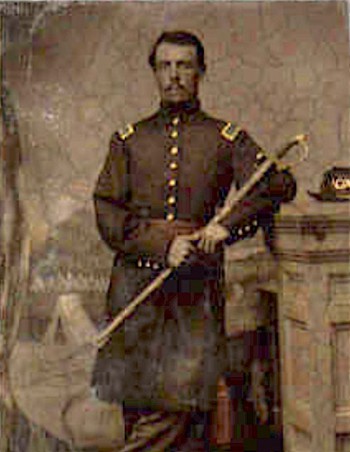
He remained on detached service in August and September 1862. Hooper was discharged for promotion to second lieutenant at Fernandina, Florida, on February 17, 1863, the date that he was commissioned into Company G of the 33rd USCT (United States Colored Troops). His muster roll notes that he was appointed by Brigadier General Rufus Saxton on that date. In September and October 1863, he was commanding pickets on Paris Island, South Carolina. He was promoted to first lieutenant on March 1, 1864, effective upon his transfer to Company I (although his muster roll indicates that he was promoted on December 8, 1863, at Beaufort, South Carolina).
On September 29, 1864, William Hooper wrote to Edwin M. Stanton, Secretary of War, asking that his son be granted a furlough because of his 68 year-old-mother’s precarious health. The father indicated that his son had been in active service without missing a day since his enlistment and that his mother “was very desirous of seeing him,” but that his son could not obtain a furlough unless Stanton intervened. William Hooper implored that this matter be addressed and that “through your kindness he may be home shortly for a little while.” Charles Hooper wrote a letter to Captain W. L. Burger, Assistant Adjutant General of the Department of the South, on October 28, 1864, asking again for a 20-day leave of absence to return home to New York City; it is unclear whether the furlough was granted. Hooper was commissioned captain on August 28, 1865, the date he was transferred to Company K and re-enlisted for a period of three years at Anderson, South Carolina. He mustered out at Charleston, South Carolina, on January 31, 1866. Although he applied for a pension in 1890, application 833,758, and his widow, Mary Hooper, applied in 1895, application 607,098, neither application seems to have been granted. His name is displayed on the African American Civil War Memorial in Washington, D.C., plaque B-49. He last lived at 345 Jamaica Avenue in Brooklyn. Hooper’s death is attributed to a fall. Section 189, lot 16987.

HOOPER, JACOB G. (1832-1867). Sergeant, 13th Regiment, New York State Militia, Company E. After enlisting as a sergeant, Hooper served for three months in 1861 with the 13th Regiment. As per the Draft Registration for 1863, he was a printer. He subsequently listed his occupation as butcher. His obituary in the New York Herald indicates that he was a Freemason; members of his lodge were requested to attend “a special communication” prior to his funeral and all Masons were invited to attend his funeral. Hooper last lived on 27th Street between Third and Fourth Avenues in Brooklyn. He died of phthisis. Josephine Hooper, who is interred with him, applied for and received a widow’s pension in 1890, certificate 299,131. Section 44, lot 3285.
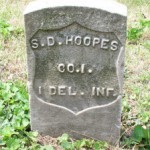
HOOPES, SANDWITH D. (1829-1909). Private, 1st Delaware Infantry, Company I. Hoopes, who was born in Pennsylvania, was living in New Castle, Delaware, with his wife and two young children at the time of the 1860 census. During the Civil War, he served for three months in 1861 as a private with the 1st Delaware Infantry. The census of 1870 reports that he was living in Newark, New Jersey; the census of 1880 indicates that he was a carpenter living in Newark. In 1892, he application for an invalid pension was approved, certificate 910,544. The 1905 New York State census indicates that he was living in Brooklyn. His last residence was 432 Park Avenue in Brooklyn. Hoopes’s death was attributed to a hemorrhage. Shortly after his death, Hannah Hoopes applied for and received a widow’s pension, certificate 688,503. Section 128, lot 33021, grave 2.
HOOTON, WILLIAM A. G. (1841-1920). Private, 42nd Massachusetts Militia Infantry, Company A. The 1855 State census and the 1860 federal census report that Hooton, a Massachusetts native, was living with his parents and siblings in Suffolk, Massachusetts. According to an article in the Boston Herald on April 11, 1861, he was elected one of the directors of the Young Men’s Christian Union, an association that numbered about 500 persons. The organization, which struggled to get funding, held Bible classes on Saturday evenings and sponsored about fifty lectures every year to reach out to young men. Listing his occupation as clerk, he enlisted at Boston, Massachusetts, on July 7, 1864, and served for 100 days with the 42nd Massachusetts Militia. He mustered out with his company on November 11, 1864.
After the War, Hooton was a member of the G.A.R., George Rickard Post #362; he indicated in its membership book that he was a clerk living at 825A Van Buren Street in Brooklyn. In 1892, he applied for and received an invalid pension, certificate 850,915. He was living in Brooklyn at the time of the 1900 census; as per the 1910 census, he was living in a mortgaged house on Fenimore Street and was able to read and write. His last residence was 340 Fenimore Street in Brooklyn. Peritonitis was the cause of his death. Clara D. Hooton, who is interred with him, applied for and received a widow’s pension in 1920, certificate 905,908. Section 186, lot 18705, grave 2.
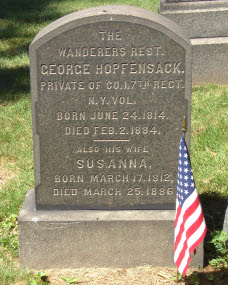
HOPFENSACK (or HOPPENSACK), GEORGE (or JOHANN GEORG, JOHN) (1814-1884). Private, 7th New York Infantry, Company I. Born in Saxony, Germany, his name appeared as Joh. G. Hopfensack on the manifest of the Hamburg Passenger Lists on April 15, 1851, as destined for New York. On September 30, 1856, he became a naturalized citizen and indicated his given name as John George. Hopfensack enlisted on September 9, 1861, at New York City, and mustered into his company on September 24. His muster roll indicates that he was absent on furlough on April 8, 1863. Hopfensack mustered out with his comrades on May 8, 1863, at New York City. His paperwork from the Soldiers’ Home in Bath, New York, at his admission in 1881, notes that he suffered from rheumatism which was contracted during his service in the winter of 1862. His gravestone confirms his service in the 7th. He last lived in Steuben County, New York. He succumbed to apoplexy. Section 157, lot 15721.

HOPKE, MATTHIAS (1824-1896). Unknown rank, United States Army. Originally from Germany, the 1856 and 1857 New York City Directories indicate that he was in the provisions business as a co-owner of an enterprise at 307 Washington Street. Hopke lived at 375 Washington Street at that time. The 1859 New York City Directory reports that he was a grocer. As per the 1863 Draft Registration, he worked in a sugar house. Hopke enlisted at New York City and served in the United States Army during the Civil War according the 1890 Veterans Census. No further details about his service are known.
According to the New York City Directory for 1872, Hopke was employed as a refiner. The 1881 Brooklyn Directory lists him as living at 346 Wycoff Street. According to the 1890 Brooklyn Directory, he was working as a clerk and was living at 208 Grand Street. His last residence was 241 Schenck Street in Brooklyn. His funeral was held at the German Evangelical Lutheran St. Luke’s Church on Washington Avenue in Brooklyn. Hopke succumbed to endocarditis. Section 28, lot 10071, grave 11.

HOPKINS, ALEXANDER O. (1838-1910). Private, 51st New York Infantry, Company D. A native of Ireland, Hopkins lived in Kingston, New York, at the time of the 1850 census. During the Civil War, he enlisted on December 1, 1864, and mustered into the 51st the same day. As per his muster roll, he was a hostler who was 5′ 4″ tall with red hair, blue eyes and a fair complexion. He mustered out on July 25, 1865, at Alexandria, Virginia.
According to an article in the Brooklyn Daily Eagle on March 9, 1882, Hopkins had been indicted for knowingly selling diseased meat. Apparently, if a quarantined animal is inspected after its death and its meat is found to be fit, then it may be sold to the State. Hopkins, being neither a veterinarian nor a physician, could not make such a determination. The case was complicated because Hopkins’s brother, Anthony, was a physician and the money for the putrid meat was received by Anthony. As per a subsequent article on July 16, 1882, Hopkins pleaded guilty to the charge of selling diseased meat in the Queens County Court of Sessions. In an effort to get a lighter sentence, Hopkins told the court that he sold the meat for use as fertilizer and not for human consumption. However, the aforementioned meat was sold to butchers for sale in New York City markets. Apparently, the cows sold by Hopkins were afflicted with pneumonia and consequently, their milk could not be sold and the carcasses of the animals were not fit for consumption. Hopkins claimed that he did not profit from the sale by saying that he paid monies to the State Controller and, that he was not a veterinarian and therefore, knew nothing about cattle diseases. The ultimate disposition of the case is not known. Hopkins last lived on Prospect Street in Leonia, New Jersey. His death was attributed to apoplexy and arteriosclerosis. Section 54, lot 9850.
HOPKINS, ARCHIBALD W. (1841-1877). Sergeant, 71st Regiment, New York State National Guard, Company D. A native of Scotland, Hopkins enlisted as a corporal at New York City on May 27, 1862, mustered into Company D of the 71st Regiment in which he served for three months, and mustered out with his comrades on September 2 at New York City. In 1863, he re-enlisted and served as a sergeant for 30 days with the 71st Regiment. On October 15, 1867, he received a patent for a metallic chair, a chair or seat that had an interlaced and corrugated wire that was then galvanized or coated with tin. His death certificate reports that he was a wire manufacturer. As per his obituary in the New York Herald, he was a Freemason and member of the Abingdon Club; members were invited to attend his funeral. His last residence was 57 Broome Street, New York City. He died from cirrhosis of the liver. Section 174, lot 18700.
HOPKINS, EDWARD ROBIE (1836-1921). Major by brevet; captain and commissary, United States Army Commissary Department; captain, 3rd Infantry, United States Army. A New York native, both of his parents were Mayflower descendants. In March 1855, Hopkins, a resident of Cortlandville, New York, was nominated for admission and accepted as a cadet to the United States Military Academy at West Point. After his 1860 graduation from West Point with honors, he enlisted and was commissioned into the 3rd Infantry of the United States Army on July 1, 1860, as a second lieutenant. On May 14, 1861, he was promoted to first lieutenant and rose to captain on June 7, 1862. Assigned to frontier duty in Texas, he was captured at Indianola, Texas, by insurgents on April 26, 1861, and exchanged on August 27, 1862, for George Plaster, 6th Virginia Cavalry. On February 9, 1863, he was promoted to captain and commissary and commissioned into the United States Army Commissary Department. He served in that capacity at the Department of the Tennessee from February 9, 1863, until April 30, 1864, then served for two months as assistant commissary at Nashville. Hopkins then was transferred to Evansville, Indiana, from May to November 1864 before being assigned as depot commissary at Hilton Head, South Carolina, from January 1 to February 14, 1865, and assistant commissary of the Military Division of the Mississippi from March 1 through April 16, 1865. He subsequently received a promotion by brevet to major on March 13, 1865, two months before tendering his resignation on May 13 of that year.
In civilian life, Hopkins was principal of the Newark Academy in New Jersey from 1867-1874, was awarded a master’s degree from Princeton in 1870, and was an instructor of mathematics at military schools in Worcester, Massachusetts, Hudson, New York, and Atlanta, Georgia, from 1874-1885. After serving as superintendent of a mining company in southwestern Colorado from 1885-1887, Hopkins also served as an Assistant Instructor of Infantry Tactics at the United States Military Academy at West Point, New York, and helped prepare students for the Academy. In 1897, he applied for and received an invalid pension, certificate 993,997. On June 10, 1898, during the Spanish-American War, he wrote to the Secretary of War and offered his services to the government in “any military capacity for which I may be deemed qualified.” He stated his attendance at West Point and the officers in his graduating class, service in the Civil War, and offered to furnish additional information on his civilian life. However, it appears that his offer was not accepted and he did not serve in the Spanish-American War. He last resided at 50 Monroe Street, Brooklyn. He died of heart disease. Section 158, lot 15363.
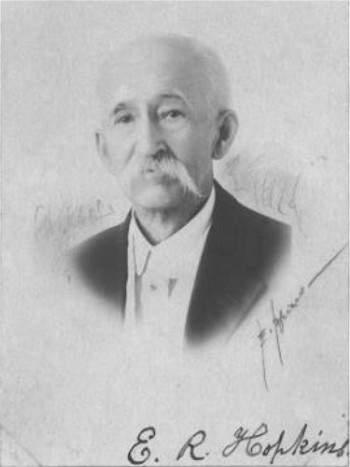

HOPKINS, JAMES A. P. (or T.) (1822-1864). Lieutenant colonel, 133rd New York Infantry. Prior to the Civil War, Hopkins was well known as a New York City police officer and had held the position of captain in the Third and Sixteenth Precincts. Enlisting at New York City on August 29, 1862, Hopkins was commissioned into the Field and Staff of the 133rd New York, also known as the Second Metropolitan Guard (recruited under the auspices of New York City’s Metropolitan Police), as its lieutenant colonel on October 4, 1862, with rank from August 29. He led his forces up the Mississippi River where they took part in the siege of Fort Hudson, Louisiana. In addition, he helped lead the 133rd in other engagements under General Nathaniel Banks. According to the petition for a minor’s pension, Hopkins contracted a pulmonary disease during his time at Baton Rouge, Louisiana, caused by exposure; over time, the disease progressed to acute tuberculosis. At some point in his service, he was detailed to New Orleans, Louisiana, for one year and ten months. His obituaries in The New York Times and the Daily True Delta of New Orleans report that during the latter part of his service in New Orleans, he was appointed Chief of Police for that city and subsequently received a commission as Chief of the United States Detective Force there. The Daily True Delta reports that Hopkins left New Orleans for New York City in order to restore his health and after he recuperated a bit, he set off for New Orleans on the Electric Spark, and was taken prisoner and paroled when the vessel was captured by the Florida. He once again returned North. However, on his muster roll, he was listed as absent without leave on October 31, 1864; his muster roll also indicates that he died of disease on November 19.
His obituary in The New York Tribune reports that he was a Freemason; members of his lodge were invited to attend his funeral. He last resided at the home of Police Inspector George W. Dilks (see) at 118 McDougal Street in New York City, where he died from pneumonia after an illness of several months. His funeral was held at Dilks’s residence. In his last will and testament, Hopkins designated Dilks and another man, Gustavas Brown, as executors of his estate. Dilks was designated as guardian of Hopkins’s children until they reached the age of majority or married. Hopkins specified that his estate was to be directed to support, maintain and further the education of his children. Any monies that remained after his four children reached the age of maturity were to be divided equally amongst them. On February 20, 1865, Dilks applied as a guardian for a minor’s pension for George Hopkins, the youngest of Hopkins’s children; his mother, Catharine Hopkins, who is interred with her husband, had died of consumption in 1862. The pension was granted on May 27, 1865, under certificate 69,082, at the rate of $30 per month. Adelaide Hopkins, the eldest of Hopkins’s three daughters, was married in 1868 at Dilks’s home. Section 189, lot 16851.

HOPKINS, JOHN (1836-1893). Private, 11th New York Infantry, Company F. Born in Ireland, Hopkins enlisted on April 20, 1861, at New York City, as a private, and mustered into Company F of the 11th New York, also known as the 1st Fire Zouaves, on May 7. The 11th was first sent to Washington, D.C., then to Alexandria, Virginia. After he was captured on July 21, 1861, at the first major battle of the Civil War, at Bull Run, Virginia, Hopkins was imprisoned at Charleston, South Carolina, as per Richmond prison records. In Charleston, he was likely held with other Fire Zouaves of the 11th at Castle Pinckney in Charleston Harbor. The 11th suffered heavy losses at Bull Run and, in September of 1861, returned to New York to reorganize. That regiment performed guard duty at Bedloe’s Island in New York Harbor (where the Statue of Liberty now stands) before returning to duty at Newport News, Virginia. After efforts to reorganize the regiment were futile, the men mustered out in May 1862. Hopkins mustered out on May 24, 1862, at Washington, D.C.: his muster roll notes that he was a returned prisoner of war. In 1879, he applied for and received an invalid pension, certificate 187,471. Hopkins last lived at 5 Patchen Place in Manhattan. His death was attributed to nephritis. His wife’s application for a widow’s pension was approved under certificate 393,543. Section 15, lot 17263, grave 1065.
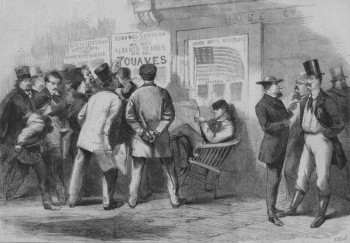
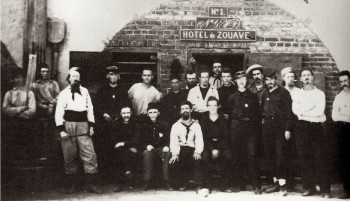
HOPKINS, MARVIN (or MARION) ANTHONY (1825-1897). Private, 56th Regiment, New York State National Guard, Company A. He was born in the United States. During the Civil War, Hopkins, who was borne on the rolls as Marion Hopkins, served for 30 days as a private in the 56th Regiment of the New York State National Guard. The Brooklyn Directory for 1864 lists his occupation as caulker at 16 Prince Street; the 1868 Brooklyn Directory lists him as a caulker at 146 Tillary Street. As per his obituary in the Brooklyn Daily Eagle, which states that he was a longtime Brooklyn resident, he had been a member of the old volunteer fire department. He last lived in Franklin, New Jersey. His obituary reports that his death was caused by pneumonia, a complication of the grippe (flu). Hopkins’s funeral was at the home of his daughter who lived at 314 Madison Street in Brooklyn. Although Sarah Hopkins applied for a widow’s pension in July 1897, there is no evidence that it was certified. Section 50, lot 8817, grave 12.
HOPKINS, SAMUEL J. (1818-1881). Lieutenant colonel, 40th New Jersey Infantry; captain, 7th New Jersey Infantry, Company H. A native of New Jersey, Hopkins lived in Newton, New Jersey, at the time of the 1860 census. He enlisted as a captain on August 29, 1862, mustered into the 7th New Jersey on that date, and mustered out at Trenton, New Jersey, on October 7, 1864. Hopkins fought in many Virginia battles including: Fredericksburg, Chancellorsville (where he was slightly wounded), McClean’s Ford, Kelly’s Ford, Wilderness, Spotsylvania (where he was wounded), North Anna, Totopotomoy, Cold Harbor, Petersburg, Deep Bottom, and Strawberry Plains. He re-enlisted and was commissioned into the 40th New Jersey as lieutenant colonel on March 14, 1865, was discharged on the same date, not being mustered in at that rank. Hopkins’s biography is listed in William Swinton’s History of the Seventh Regiment (1870); it is unclear when he served in Company F. As per Swinton’s regimental history, his regiment captured five stands of Confederate colors at Andersonville when they freed Union prisoners there. The 1870 census reports that he lived in Morristown, New Jersey, with his wife, Marie Eliza Berrien Hopkins, and two children. Hopkins died of pleuro-pneumonia. Section 108, lot 7239.
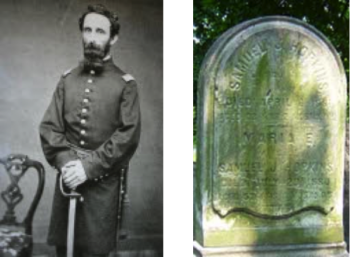
HOPKINS, SANDFORD (or SAM) (1844-1918). Private, 8th Regiment, New York State National Guard, Company A. A New York native, Hopkins enlisted as a private at New York City on May 29, 1862, mustered into the 8th Regiment that same day, and mustered out with his company on September 10, 1862. His Draft Registration of July 1, 1863, notes that he was single and lived in Hoboken, New Jersey. The Jersey City Directory for 1867 reports that he was a clerk who lived at 274 Bloomfield Street in Hoboken. As per the census of 1880, Hopkins worked as an accountant and lived in Hoboken with his wife and four young children. The Jersey City Directories for 1888 and 1899 show that he was working as a clerk and lived in Jersey City at 62 9th Street. The 1900 census notes that he had been married thirty-one years and lived in Hoboken with his wife, children and grandchildren. In 1908, his application for a pension was approved, certificate 1,149,711. He last lived at 1014 Hudson Street in Hoboken. Shortly after his death from stomach cancer, Theresa Hopkins applied for and received a widow’s pension, certificate 868,673. Section 102, lot 19724.
HOPKINS, WILLIAM HENRY (1844-1909). Captain, 13th United States Colored Troops (USCT) Heavy Artillery; corporal, 5th New York Infantry, Company A; 146th New York Infantry, Company D. Hopkins was born in New York City. At the time of the 1850 census, his family lived in Otsego, New York. The 1860 census notes that he was living in Brooklyn with his parents and siblings and was an apprentice.
During the Civil War, he enlisted as a private on December 28, 1861, and mustered into Company A of the 5th New York that same day. On May 19, 1862, he left sick with a fever while on the march at Roper Meeting House, Virginia, and was hospitalized in Philadelphia, Pennsylvania, in May. He later returned to his regiment and was promoted to corporal on October 9, 1862. On May 4, 1863, he was transferred as a private to Company D of the 146th New York where he was promoted to corporal on an unspecified date. Hopkins’s Draft Registration Card, filed in 1863, notes that he was a bookbinder. Hopkins re-enlisted on March 21, 1864 and was discharged on August 11 at Camp Nelson, Kentucky, for promotion to captain in the 13th U. S. Colored Heavy Artillery; he was commissioned on September 7, 1864 and mustered out on November 18, 1865.
As per the Brooklyn Standard Union on October 21, 1868, Hopkins married Nettie (Eliza Annette) E. Howard, the daughter of a lawyer, at the bride’s Brooklyn residence two days earlier; the announcement specified “no cards”; they had one daughter, Elsie.
According to the New York State census for 1892, he lived in Brooklyn. The 1900 census reports that he lived with his wife of 32 years at 439 5th Street in Brooklyn, a home he owned and his last address; that document reports that he was a bookbinder. The 1905 New York State census notes that he was married and lived in Brooklyn. His death was attributed to a tumor; his death certificate notes stricture of the esophagus (abnormal tightening) and pulmonary edema. His name is listed on the African-American Civil War Memorial in Washington, D. C., plaque B-28. Section 18, lot 8463.
HOPKINSON, DANIEL H. (1840-1884). Clerk, United States Navy. Born in Derbyshire, England, Hopkinson enlisted as a landsman at the Naval Rendezvous at New York City in June 1861. At that time, he was 5′ 6″ tall with hazel eyes, brown hair and a fair complexion. Hopkinson served as a clerk to Paymaster E. K. Cooley, spending most of his two years of service on the Albatross, part of the North Atlantic Squadron, which was stationed off Beaufort, South Carolina. According to his Draft Registration Form of 1863, he was employed as a publisher and was not married.
As per his obituary in The New York Times, which confirms his Civil War service, Hopkinson settled in New York City after his Naval service ended and entered the publishing field. In February 1869, he conceived of the idea of establishing a paper for the jewelry trade. His publication, the Jewelers’ Circular, filled a need and was immediately profitable. He was living in Brooklyn at the time of the 1870 census. In 1873, he combined the Jewelers’ Circular with the Horological Review; he continued to manage that periodical as the sole editor and proprietor throughout his lifetime. In 1877, he organized the Jewelers’ League and was a member of the Freemasons. The 1880 census reports that he was a journalist and living in Brooklyn with his wife, daughter and in-laws. He last resided at 310 Clinton Avenue in Brooklyn. Hopkinson’s death certificate indicates that he was a widower and that he had been employed as a journalist. His obituary notes that he contracted malarial fever while on a fishing trip to New Brunswick and died four weeks after he had returned home in a fatigued condition. Section 92, lot 2453.
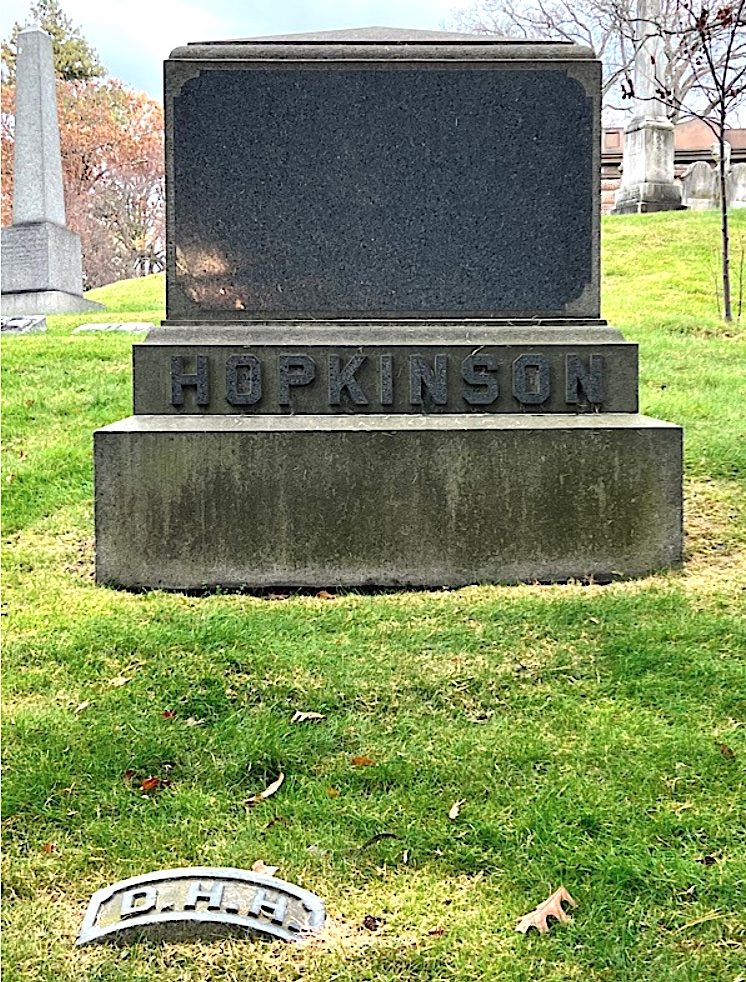
HOPPER, GEORGE FAULKNER (1824-1891). Colonel, 10th New York Infantry, Company H. A New York City native, Hopper was a volunteer fireman and paperhanger before the War. His obituary in the New York Herald reports that, in 1842, he was made foreman of a hose company in the Fourteenth Ward in New York City. Hopper organized and joined Company H of the 10th New York as a captain on April 26, 1861, and mustered in four days later. He wrote the following report about the Battle of Fredericksburg on December 14, 1862:
Before sunrise on the following day (Friday, December 12), we crossed the river, and took up position in line of battle in Caroline street, Fredericksburg, where we remained all that day and bivouacked that night.
….At 10 a.m. on Saturday, December 13, we got under arms, and, marching on the right of the brigade, passed through Princess Anne street, immediately after [Edgar A.] Kimball’s [see] brigade, which we were ordered to follow at a distance of 150 paces, and support as soon as it became weakened. While passing through Princess Anne street Colonel John Bendix [see] was wounded in the face by the explosion of a shell, and the command devolved on Captain Salmon Winchester [see]. We filed into the open country at 11:30 a.m., and were immediately greeted by shells from several rebel batteries. Advancing to the front, a distance of nearly a quarter of a mile, we lost a number of men, wounded by the enemy’s incessant shelling. We took our position at a knoll, a short distance behind the front line, and sustained a heavy fire of shell and solid shot from all the rebel batteries. Captain Winchester was here mortally wounded, and the command devolved on me. A short time after, I was ordered to the front with the rest of the brigade, to support Kimball, where the regiment remained until relieved and ordered back. We were upward of two hours under fire, and suffered severely. Out of 14 men taken into action, our losses amount to, killed 9; wounded, 54; missing, 4; total, 67…
Hopper was promoted to major on May 1, 1863, and transferred to Field and Staff on that day. Subsequently, he was promoted to lieutenant colonel on January 5, 1864. In his field report of the engagement at Weldon, Virginia, on October 27, 1864, he wrote two days later:
“…We started from bivouac, near Weldon railroad, 3 a.m.; marched cautiously about three hours, skirmishers and flankers out. Reached Cedar Creek, near mill-dam, where the enemy’s cavalry was discovered intrenched (sic). My command was upon the first line, left resting upon the road. After some delay an advance was ordered. We forded the stream under a brisk fire, advanced through obstructions, and carried our part of the rebel line, capturing and sending to the rear 8 or 10 prisoners. Reformed here and marched cautiously through a wilderness of pine and oak to a point upon the Petersburg plank road and about one mile and a half from the South Side Railroad, where skirmishing was going on with rebel cavalry. 2 p.m., formed line alongside of woods under a heavy fire of artillery, and shortly after deployed command as skirmishers upon the right of the line, my right resting as near as possible to a road upon which a column of the enemy were moving. Soon after, an attack was made on our right and rear, when we were relieved from this position and formed line of battle near the edge of woods, where we remained until ordered by brigade commander to join the balance of brigade upon the road. Took up line of march toward rear. The entire loss in my command was 4 enlisted men wounded and 4 taken prisoners.”
Hopper participated at the capture of Norfolk, Virginia, and fought in Virginia at the Battles of Gaines Mills, White Oak Swamp, Malvern Hill, Chancellorsville, Cold Harbor, Strawberry Plains, Deep Bottom, Reams Station, Boydton Road, and Hatcher’s Run; he also fought at the Battle of Gettysburg, Pennsylvania. He was promoted to colonel in January 1865, and witnessed the surrender of Robert E. Lee. Just before the surrender, he wrote this letter from Headquarters of the 10th New York on April 14, 1865, describing the operations since March 29:
March 29, started from camp near Hatcher’s Run 6 a.m., and marched to a point upon the Vaughan road near Dabney’s Hill, where the command aided in erecting breast-works. March 31, regiment sent upon picket duty about 6 a.m. Remained upon this duty until morning of 2nd of April, when in conjunction with the rest of the line, the regiment advanced and entered a rebel fort to the right of the Boydton road, capturing it and the works contiguous, with 30 prisoners. Loss, 1 commissioned officer and 1 enlisted man wounded. Upon 7th instant the command acted as flankers to the column, and participated also in the advance at High Bridge and near Farmville, losing two enlisted men wounded. April 8, the command acted as skirmishers and flankers on the right of the division. 9th, marched to point near Clover Hill, where we remained until the morning of the 11th instant, when the command took up the line of march toward Burkeville, where it arrived evening of the 13th instant.
I have to report very favorably as to the general good conduct and steady bearing of the commissioned officers and enlisted men of my command during the past fatiguing and arduous campaign.
Hopper mustered out on June 30, 1865, at Munson’s Hill, Virginia. He was highly respected and widely known among veterans and to his men as “the ideal soldier.”
His obituary in the New York Herald, which confirms his Civil War service, reports that he was appointed superintendent of the Box Department of the New York General Post Office in 1869 and subsequently became superintendent of the Night Department and the Foreign Department. He held these offices at the Post Office until 1881. He was vice president of the Association of Exempt Firemen at the time of his death and had also served as a trustee of that organization. Remaining active in military affairs, Hopper was an organizer of Sumner Post #24 of the G.A.R., a member of the Council of Administration, Department of New York, Grand Army of the Republic, and a Freemason. Hopper had been a trustee of the G.A.R. Memorial Committee and had been grand marshal of Decoration Day parades. He last resided in Paskack, New Jersey. The cause of his death was hemorrhage of the lungs.
Hopper’s funeral took place at the 33rd Street Baptist Church and was well-attended by members of the Grand Army of the Republic including past commanders of the Sumner Post and past department commanders. Reverend Clarke Wright, department chaplain of the G.A.R., officiated. Members of the Sumner Post attended in uniform, a male quartet sang, and a large contingent from the Veteran Firemen’s Association attended. A telegram from the National Encampment in Detroit, expressing their sympathy and sorrow at the loss of a “true comrade,” was read at the funeral. There were many floral tributes which expressed the affection of all toward Hopper. The 10th Veterans wrote this tribute to him after his death, “Nature sometimes produces a man with a certain magnetism which endears his associates to him with an affection like that of a child to a beloved father. Such a man was Colonel Hopper, which was best exemplified by the fact that he was popularly known as “Uncle George.” Section 62, lot 4362.
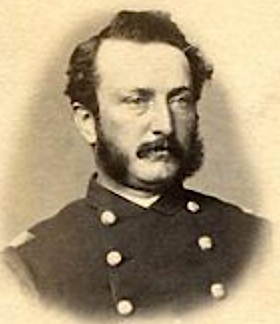

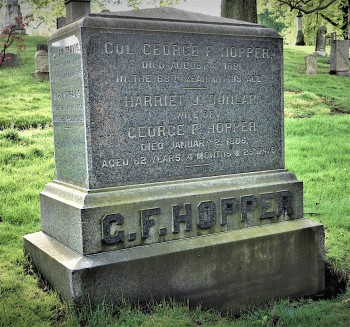
HOPPER, JACOB J. (1841-1914). Private, 8th Regiment, New York State National Guard, Company I. A native New Yorker, Hopper lived in New York City at the time of the 1850 census. During the Civil War, he enlisted at New York City as a private on May 29, 1862, mustered into the 8th that day, and mustered out at New York City after serving three months on September 10. In 1911, his application for an invalid pension was granted, certificate 1,180,851. As per his obituary in the New York Herald, he was a fireman; members of the Association of Exempt Firemen were requested to meet at the association and attend his funeral. He last resided at the Star Hotel on Greenwich Street in Manhattan. He died from nephritis. Section 44, lot 5070.
HOPPER, JAMES E. (1849-1920). Private, 6th New York Heavy Artillery, Companies H and A. Born in Phillipstown, New York, he was living there at the time of the censuses of 1850 and 1860. During the Civil War, Hopper enlisted as a private at age fourteen on January 24, 1864, at Tarrytown, New York, and mustered into Company H of the 6th Heavy Artillery on that day. As per his muster roll, he was a farmer who was 5′ 5″ tall with blue eyes, black hair and a fair complexion. He was transferred into Company A (although his soldier record says that Hopper was transferred into Company E) on June 27, 1865, when the regiment was reorganized. He was discharged on August 25, 1865.
Hopper was living in Brooklyn and married at the time of the census of 1880 and employed as a clerk. The 1890 Veterans Schedule confirms his Civil War service. In 1897, Hopper applied for and received an invalid pension, certificate 1,165,350; his pension record indicates additional service in the Cavalry Detachment, United States Military Academy. As per the census of 1910, he was living with his wife on West 13th Street in Manhattan and working as a wholesale packer. In 1911, Hopper mustered into John Adams Dix Post # 135; at that time, he listed his occupation as clerk. The 1920 census reports that he was a widower and a boarder, was apparently retired, and had no descendants. He last lived at 110 St. Nicholas Avenue in Brooklyn. His death was caused by heart disease. Section 136, lot 28307, grave 82.
HOPPING (or HOPKING, HOFFING), IRA WILBUR (1837-1915). Private, 23rd Regiment, New York State National Guard, Company B. Originally from Morris County, New Jersey, his family lived in Chatham, New Jersey, as per the censuses of 1850 and 1860. During the Civil War, Hopping enlisted as a private in 1863, served in Company B of the 23rd Regiment during its 30-day activation that year, and mustered out with his company. The 1870 census reports that he lived in Brooklyn. According to the census of 1900, he was a widower who lived in Brooklyn; the census of 1910 shows that he lived at 198 Prince Street in Brooklyn, was widowed, owned his home, worked as a mason, and was able to read and write. His obituary in the Brooklyn Daily Eagle indicates that he moved to Fairhope, Alabama, in 1912, to live with his brother. He died in that town three years later. His death was attributed to dementia. The Fairhope Courier reported that after a simple funeral service, Hopping’s remains were shipped to Brooklyn in accordance with his wishes to be buried at Green-Wood Cemetery beside family members who had pre-deceased him. Section 202, lot 27515, grave 2.
HOPPOCK, WILLIAM C. (or H.) (1829-1896). Private, 31st New Jersey Infantry, Company D. Born in New York, the 1860 census reports that he was living in New York City. During the Civil War, Hoppock enlisted as a private on September 3, 1862, mustered into the 31st New Jersey on September 17, and mustered out on June 24, 1863, at Flemington, New Jersey. As per the censuses of 1870 and 1880, he was married and lived in Hillsborough, New Jersey; the 1880 census indicates that he was a farmer. In 1890, he applied for and received an invalid pension, certificate 577,906. He last lived in Somerville, New Jersey. His death was attributed to paralysis. Lavinia Hoppock applied for and received a widow’s pension, certificate 504,228. Section 107, lot 194.
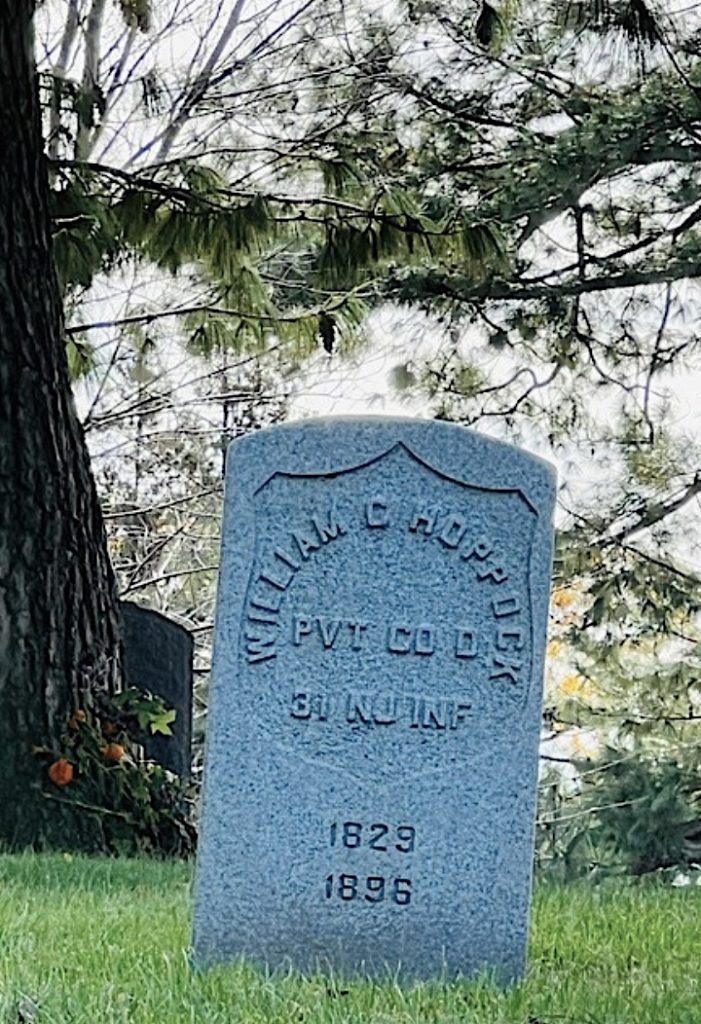
HOPSON, JAMES A. (1844-1915). Private, 13th Regiment, New York State National Guard, Company H. Born in England and the brother of Robert Hopson (see), Hopson’s name appeared on the manifest of the Houghton which sailed from Liverpool, England, and arrived in New York on September 19, 1853. (The 1910 census lists the immigration year as 1852; that date appears to be an error.) The New York State census of 1855 notes that Hopson was living in Brooklyn with his parents and family. During the Civil War, he enlisted at Brooklyn on May 28, 1862, mustered immediately into the 13th National Guard, and mustered out at Brooklyn after three months on September 12.
The 1870 census indicates that Hopson was living in Brooklyn with his parents, sisters and extended family. In 1890, Hopson applied for and received an invalid pension, certificate 590,130. The 1900 federal census, which reports an immigration year of 1853, and the 1905 New York State census report that he was living in Brooklyn. As per the 1910 census, he was a naturalized citizen, lived at 125 St. John’s Place in Brooklyn, had been married for 44 years, was able to read and write, and was a survivor of the Union Army. He last resided at 125 St. John’s Place in Brooklyn. He died of locomotor ataxia, a degeneration of the spinal cord. Hattie Hopson, who is interred with him, received a widow’s pension in 1915, certificate 800,365. Section 153, lot 19656.
HOPSON, ROBERT W. (1837-1894). Sergeant, 13th Regiment, New York State Militia, Company A. Originally from England and the brother of James Hopson (see), Robert Hopson became a naturalized citizen on March 21, 1859. During the Civil War, he served for three months in 1861, mustering into the 13th Regiment as a corporal and mustering out as a sergeant.
As per an article in the Brooklyn Daily Eagle on September 5, 1868, Hopson was involved in an altercation in a liquor store near his workplace at 91 South Street in Manhattan. Henry (also known as Harry) Lyon, one of the proprietors of Farrar & Lyon store there, claimed that, “you owe me $2.50 for a bottle of gin which your wife got.” Hopson then said that he would pay if he owed the money but that “his wife was too much a lady” to ever buy gin. In the ensuing interchange, Hopson called Lyon a liar and Lyon struck Hopson on the head with an umbrella, knocking him to the ground. Hopson then drew a small four-barreled Sharp’s repeater which he fired at Lyon, striking him in the breast. Lyon died at New York Hospital shortly after the incident; Hopson was taken to the station house of the 2nd precinct. A lengthy article, “The Shooting of Harry Lyon the Coroner’s Inquest,” appeared in the New York Herald on September 7, 1868. The testimonies of witnesses and the police officer indicated that Hopson could be convicted of manslaughter in the third degree, killing with a deadly weapon in the heat of passion. One witness, who knew that Hopson carried a gun, claimed that he grabbed Hopson’s arm and begged him not to shoot; other witnesses gave their versions of the scuffle, some testifying that Hopson had offered $5 for the bottle of gin, others hearing no such offer. A subsequent article in the Brooklyn Daily Eagle on March 7, 1872, noted that the trial, which had been repeatedly postponed, had been held at the New York Court of General Sessions; Hopson was acquitted by the jury. The news article about Hopson’s acquittal refers to the proprietor as Lyons, not Lyon; that article also claims that both men had been drinking at the time of the altercation.
The 1880 census reports that Hopson was living in Queens and working as a clerk in a store. He last lived in Lawrence, Long Island. The cause of his death was cirrhosis of the liver. As per his obituary in the New York Herald, Hopson’s funeral was held at the home of his sister at 430 Pacific Street in Brooklyn. In 1894, Annie S. Hopson applied for and received a widow’s pension, certificate 531,564. Section 153, lot 19656, grave 3.
HORN, WILLIAM CASPAR (or CARLTON) (1844-1902). Private, 2nd Battalion Maryland Cavalry, Company F, Confederate States of America. Born in Baltimore, Maryland, he was living there at the time of the 1850 and 1860 censuses. During the Civil War, Horn was a private in Maryland’s 2nd Battalion, a Confederate regiment. The company’s muster roll shows that he enlisted on July 27, 1864, at Louisiana. On April 21, 1865, he was captured at Winchester, Virginia, committed to the Old Capitol Prison at Washington, D.C., in June, and released on July 8, 1865, after taking an oath of amnesty.
After the Civil War, he came North and became the head of W. C. Horn, Brother & Co., stationery manufacturers. In July 1891, he applied for a passport stating that he was a manufacturer who lived in East Orange, New Jersey, and planned to return to his home in September of that year. At the time of his passport application, he was 5′ 11″ tall with hazel eyes, black hair sprinkled with gray, ruddy complexion, Grecian nose, broad forehead, small mouth and round face. As per the New England Society yearbook, Horn joined that organization on October 6, 1894. The 1900 census reports that he had been married 19 years, and lived in East Orange. An incorporator of the People’s Bank of East Orange, New Jersey, he was also a director of New York’s Shoe and Leather Bank. Horn was a member of several organizations, including the Union League Club of New York, the Essex County Country Club, and the Orange Riding and Driving Club. He last lived at 125 Prospect Street in East Orange, New Jersey. He died from a cerebral thrombosis. Section 198, lot 24884, grave 6.
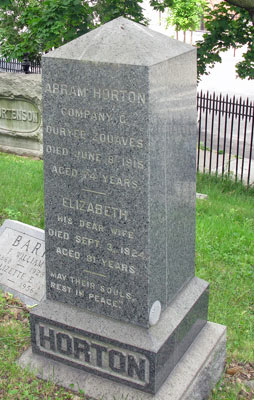
HORTON, ABRAM (or ABRAHAM) (1840-1915). Acting drum major, 5th New York Infantry, Company G. A native New Yorker, Horton was living in Fishkill, New York, at the time of the 1860 census. He enlisted on April 30, 1861, and mustered into the 5th New York as a private on May 9. He was 5′ 8″ with blue eyes, brown hair and a tattoo of the United States coat of arms on his right forearm that bore his initials. When he entered the military, he was a hat presser and machinist. While in service, Horton was a musician and drummer rising to acting drum major on December 3, 1862. He mustered out at New York City on May 14, 1863.
At the time of the 1870 census, he was married with three young children and living in Jersey City, New Jersey. The census of 1880 indicates that he was living in Brooklyn, married with four children, and employed as a bank messenger. The 1900 and 1910 censuses report that Horton was living in Southhampton, New York; according to the 1910 census, he owned his house on Main Road in Flanders, was a survivor of the Union Army, and had been married 47 years. In 1904, Horton’s application for an invalid pension was approved, certificate 1,084,646. Although the 1915 New York State census reports that he had moved back to Brooklyn, another document indicates that he last lived in Flanders, Suffolk County, New York. Shortly after his death in 1915, Elizabeth Horton applied for and received a widow’s pension, certificate 800,586. Section J, lot 34294.
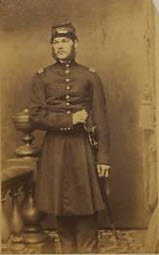
HORTON, DANIEL W. (1837-1863). Captain and commissary of subsistence, United States Volunteers; regimental quartermaster, 51st New York Infantry. A native New Yorker, he enlisted as first lieutenant on August 31, 1861, at New York City, and was commissioned into the 51st New York’s Field and Staff on October 4, 1861, the same day he was promoted to first lieutenant and regimental quartermaster. As per his muster roll, he was a civil engineer who was 6′ 1 2/3″ tall with hazel eyes, brown hair, and a dark complexion. Upon his discharge for promotion on October 5, 1862, he was commissioned that day as captain and commissary of subsistence of the United States Volunteers. A note from the Adjutant General’s Department date April 17, 1869, noting the completion of Horton’s record, indicates that he was paid in full at the time of his discharge. He died of consumption on February 14, 1863. He last lived at 219 West 31st Street in Manhattan. Shortly after his death in 1863, his widow, Hortense E. Horton, applied for and was granted a pension, certificate 50,178. Section 11, lot 3812.
HORTON, WILLIAM H. (1840-1912). Private, 52nd Regiment, New York State National Guard; 176th New York Infantry. A New Yorker by birth, the New York State census for 1855 reports that he was living in Brooklyn with his parents and three siblings. During the Civil War, Horton enlisted as a private on October 28, 1862, and mustered the same day into 52nd National Guard. On December 15, 1862, he transferred into the 176th New York. Other details of his service history are not known. The 1880 census reports that he was married, living in Brooklyn, and employed as a bookkeeper. He last lived at 75 Clifton Place, Brooklyn. Records indicate that he was killed by strangulation. Section 156, lot 21309, grave 2.
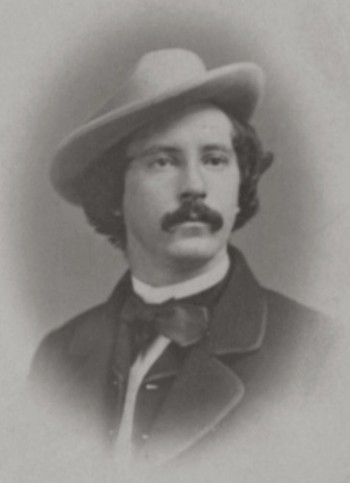
HORTON, WILLIAM WALLACE (1837-1864). First lieutenant and adjutant, 145th New York Infantry; ensign, 15th New York Engineers, Company D. Horton was the brother-in-law of Julius Hicks (see) and lived with him in 1860 when he was a married medical student. During the Civil War, Horton enlisted as an ensign at Willets Point, New York, on June 17, 1861, and was commissioned into Company D (of which Julius Hicks was the captain) of the 15th New York Engineers on June 25. Horton resigned on January 27, 1862. He re-enlisted as a first lieutenant and adjutant on July 16, 1862, and was commissioned into the Field and Staff of the 145th New York Infantry on October 10 with rank from July 16. He mustered out on March 8, 1863. On June 24, 1864, Horton was arrested in Nashville, Tennessee and accused of “buying liquor for soldiers”; his $1,000 bond was paid by himself and Elizabeth Horton, presumably his wife. He died a short time later; Green-Wood’s records list the cause of death as “casualty.” Section 180, lot 12357.

HOSFORD, SAMUEL E. (1836-1912). First sergeant, 11th New York Infantry, Company E. Born in Ireland, Hosford was 5′ 6″ tall with gray eyes and brown hair. At the onset of the Civil War, he lived at 347 West 37th Street in Manhattan and was a member of the Valley Forge Engine #46 at 138 West 37th Street. He enlisted as a private at New York City, and, on May 7, mustered into the 11th New York, also known as Ellsworth’s Fire Zoaves, because many of the recruits were volunteer firemen. The 11th arrived in Washington, D.C., with much fanfare and helped extinguish a fire at Willard’s Hotel in the Capitol on May 9. The regiment fought in Virginia at Arlington Heights (May 24, 1861); Fairfax Court House (July 17, 1861); and First Bull Run (July 21, 1861), a battle in which more men from the 11th were killed than from any other Union regiment. He was promoted to first sergeant on September 1, 1861, fought at Hampton Roads, Virginia, on March 8, 1862, the site of the famous sea battle of the Monitor v. Merrimac, and mustered out on June 2, 1862, at New York City.
Active in sports, Hosford’s initial interest was baseball; he played shortstop for the Empire Club and was club secretary in 1866, according to Base Ball Founders: The Clubs, Players and Cities of the Northeast That Established the Game (edited by Peter Morris and others, 2013). Hosford also played cricket, first with the well-known St. George’s Cricket Club of Hoboken, New Jersey. He devoted himself to cricket after joining the Manhattan Cricket Club of Brooklyn in 1869, an organization to which he belonged for more than 30 years. As per his obituary in the Brooklyn Daily Eagle, he was a familiar presence on the Prospect Park Parade Grounds where he spread his enthusiasm for that sport. His obituaries in The New York Times and the Brooklyn Daily Eagle report that Hosford was one of the most renowned cricket players in the Metropolitan area.
The census of 1880 reports that he was a clerk in the hosiery business. As per the Brooklyn Directory of 1891, he was a clerk and lived at 158 Hart Avenue. In 1902, he was elected first vice president of the Manhattan Cricket Club of Brooklyn, and was its president for four terms. He became vice president of the New York Veteran Cricket Association in 1903. Hosford was also a member of the Staten Island Cricket and Tennis Club. In 1904, his application for an invalid pension was approved, certificate 1,101,202. The 1907 Brooklyn Directory indicates that he worked in dry goods. He retained his interest in military affairs as a member of George C. Strong Post #534 of the G.A.R. His last residence was in Summit, New Jersey, where he lived the last eighteen months of his life. His funeral took place at the Puritan Congregational Church on Lafayette and Marcy Avenues in Brooklyn, where he had been a member. His widow, Emily Hosford, received a pension in 1912, certificate 738,912. Section 198, lot 30677, grave 6.
HOSIE (or HOSEY, HUSSEY), THOMAS (1829-1869). Private, 25th Regiment, New York State Militia, Company A; 63rd New York Infantry, Company K; 43rd New York Infantry, Company D. Originally from Paisley, Scotland, Hosie first served as a private with the 25th Regiment for three months in 1861. He re-enlisted as a private at Albany, New York, on October 5, 1861, and mustered into the 63rd New York the same day. He was listed as a deserter on October 9, 1861, at Camp Carrigan, New York. Subsequently, he re-enlisted as a private at Albany on February 27, 1862, and mustered into the 43rd New York on April 4. As per his muster roll, which indicates that he was also borne as Thomas Hosey or Hussey, he was a slater who was 5′ 7″ tall with blue eyes, black hair and a dark complexion. On May 4, 1863, he was taken prisoner of war at the Battle of Fredericksburg, Virginia, and was paroled back to Union forces eleven days later at City Point, Virginia, and sent to Camp Convalescent, Virginia, on May 22. His death certificate notes that he was married and worked as a slater. As per his obituary in the New York Herald, he died after a fall while on the job; friends and acquaintances were invited to attend his funeral. His obituary was sent to Scottish and Western papers to copy. His last residence was 27 Hester Street in Manhattan. Section 127, lot 8259, grave 262.
HOSMER, JAMES RAY (1834-1923). Captain and assistant quartermaster, United States Volunteers Quartermaster’s Department; second lieutenant, 8th Maryland Infantry, Company D. Born in New York City, Hosmer was a lawyer who received his bachelor’s and master’s degrees from Columbia University. During the Civil War, he was a resident of Baltimore, Maryland, where he enlisted as a second lieutenant on September 11, 1862, was commissioned that day into the 8th Maryland Infantry, and was appointed to acting quartermaster on September 18. He was detailed to court-martial duty at Baltimore on February 15, 1863. On May 12, 1863, he was discharged for promotion to captain (document below) and commissioned that day into the United States Volunteers Quartermaster’s Department serving there until he resigned his commission on December 13, 1864. His obituary in the Brooklyn Daily Eagle, which confirms his Civil War service, reports that he had served on the staff of General Phil Sheridan.
Subsequently, Hosmer served as a commissioned officer in the Spanish-American War as an assistant quartermaster. His obituary notes that he was a prominent lawyer who had made Brooklyn his home for the last 30 years of his life and was a diplomat, having served as United States Consul General to Guatemala and having been attached to the American Embassy in London. In 1904, his application for a pension was approved, certificate 1,097,053. As per his obituary, he was a past commander of Winchester Post #197 of the G.A.R. and a judge advocate in that organization. In addition, he was a member of the Delta Psi fraternity, the Sons of the American Revolution and the Society of Colonial Wars. Hosmer, in an unstated year, paid his alumni dues of $5.00 to Columbia, and noted that he was the sole surviving member of the class of 1855. He last lived at 62 Montague Street in Brooklyn. His death was attributed to the infirmities of old age. In 1924, Isabelle Hosmer applied for and received a widow’s pension, certificate 944,612. Section 142, lot 25039, grave 1.

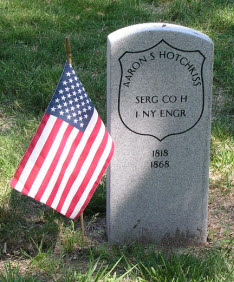
HOTCHKISS, AARON S. (1818-1868). Sergeant, 1st New York Engineers, Company H. Hotchkiss was born in New York City. At age 44, he enlisted at New York City as a private on August 31, 1862, and mustered in on that day; some records give the date as September 1, 1862. At that time, he was a carpenter who was 5′ 8″ tall with blue eyes, dark hair and a light complexion. He was paid an enlistment bounty of $25 on September 1 and a month’s advance pay of $13. He was promoted to artificer on July 5, 1863, was on detached duty at the Engineer’s Department from September 1863 through April 1864, then detached to the Department of Virginia and North Carolina, until May 31, 1864. He was promoted to sergeant on February 11, 1865, was on detached duty, being that he was a carpenter, repairing pontoons at Point of Rocks with a detail of eleven men, in February and April 1865, and mustered out on June 30, 1865, at Richmond, Virginia. He was owed $75 at muster out; he had last paid $5.12 to his clothing account on August 10, 1864. Hotchkiss died after he fell from a balcony at 424 West 44th Street in Manhattan, where he was working as a carpenter. According to his obituary in the New York Herald, he last lived at 595 Ninth Avenue; friends and relatives were invited to attend his funeral there. His wife applied for and received a widow’s pension in 1890, certificate 309,792. Section 4, lot 32722.
HOTCHKISS (or HOTCHKIS), EDWIN O. (1832-1908). First lieutenant, 23rd Regiment, New York State National Guard, Company D. Born in New York City, his ancestors on both sides of his family fought in the American Revolution. The 1860 census reports that he was married with two young children and lived in Brooklyn with his family, parents, and others. After enlisting as a private on June 18, 1863, in Company D of the 23rd Regiment, a company that he helped organize, he rose rapidly through the ranks to first lieutenant. His regiment was engaged in campaigns in Maryland and Pennsylvania that year. During the New York City Draft Riots of 1863, he did guard duty at the Atlantic Dock and other points. He mustered out on July 22, 1863, at Brooklyn. Although his soldier records indicate that his highest rank was first lieutenant, he is listed as captain of the Howitzer battery of the 11th Brigade on other documents. In 1865, he was attached to the staff of Brigadier General Jesse C. Smith, commanding the 11th Brigade as Major of Engineers. After the War, he served as colonel, commanding the 23rd Regiment’s Uniformed Veteran Battalion. He was also a member of the Old Guard of New York City and the G.A.R., Ulysses S. Grant Post #327. As per his obituary in the Brooklyn Daily Eagle, members of the Veteran Association of the 23rd Regiment were invited to attend his funeral. His death certificate, which spells his name “Hotchkis,” notes that he was retired. He last lived at 493 4th Street in Brooklyn. Section 207, lot 34124.
HOUGHTON, FRANCIS WALTER (1835-1911). Private, 7th Regiment, New York State National Guard, Company K. A native of New York State, Houghton lived with his family in New York City at the time of the 1850 and 1860 censuses. During the Civil War, he enlisted as a private for the 30-day activation of the 7th Regiment in 1863. He continued to serve with the 7th after the War and was promoted to first lieutenant in 1871. The records for the 7th Regiment indicate that on November 21, 1872, Houghton was assistant commissary of subsistence and lived at 336 East 15th Street in New York City.
On his passport application of January 27, 1873, Houghton describes himself as 5′ 5″ tall with dark eyes, medium forehead, curved mouth, full nose, black hair, dark complexion and round face. The 1880 census indicates that he was married, worked as a clerk and lived in Jersey City, New Jersey. Houghton was the correspondent in the offices of Rodman and Hepburn, and was described by William E. Uptegrove, who worked under him and wrote an autobiography in 1926, as “a bright, quick, active man and a thorough gentleman” and “a member of an old, aristocratic family who had become somewhat reduced in circumstances.” During his employment at Rodman and Hepburn, Houghton meticulously crafted letters in pen and for some time served in Mexico. His military service was corroborated by the 1890 Veterans Census when he lived in Jersey City. At the time of the census of 1900, he was living in Jersey City with his wife and two adult children; the 1910 census reports that he had been married thirty-eight years, was able to read and write and was employed as a custodian. One of his interests was genealogy and tracing the history of the Houghton family; his ancestors came to the United States from England (year not stated). His last residence was at 511 Garfield Avenue in Jersey City, New Jersey. The cause of his death was cancer. Section 71, lot 8105.
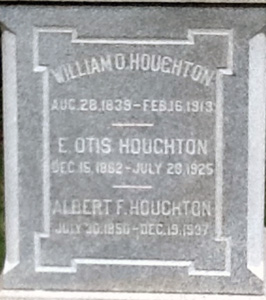
HOUGHTON, WILLIAM OTIS (1839-1913). Private, 46th Alabama Infantry, Company A, Confederate States of America. A native of Tuscaloosa, Alabama, Houghton resided in Coosa County, Alabama, at the time of the 1850 and 1860 censuses. His parents were born in New England. During the Civil War, Houghton enlisted at Montgomery, Alabama, as a private on February 28, 1862, mustered into Company A of the 46th Alabama the next day, with a bounty of $50.00 promised to him. As per The Heritage of Elmore County, Alabama, the regiment was organized in the spring of 1862, trained in Tennessee and was part of the Kentucky campaign. The men in Company A were from southern Coosa County, now part of northern Elmore County.
According to the aforementioned book, in December 1862, the 46th went to Mississippi where at the Battles of Port Gibson and Baker’s Creek, the men suffered many casualities; at the latter battle, half the regiment and the field offices were captured. Subsequently, the troops engaged at the siege of Vicksburg until surrender on July 4, 1863. After the men were paroled, they reorganized at Demopolis, Alabama, under Confederate General Edmund Pettus and were sent to the Army of Tennessee where they suffered loses at Lookout Mountain and Missionary Ridge in November 1863. After wintering in Dalton, they were engaged at Crow’s Valley and then lost many men during the Atlanta campaign and at Jonesboro in July through August 1864. The troops then went on to fight at Nashville and were the rear guard during the retreat to Mississippi.
On December 16, 1864, Houghton was taken as a prisoner of war by Union forces under Major General George H. Thomas near Nashville, Tennessee, then was turned over to the provost marshal and transported to Louisville, Kentucky, that same day. As per The Heritage of Elmore County, Alabama, (page 181), “the 34th [a regiment in the Army of Tennessee] was almost annihilated below Nashville on December 15-16. The remaining men barely escaped and returned to North Mississippi….” Houghton was moved to Camp Douglas in Chicago, Illinois, on December 25, 1864, and was discharged there on June 19, 1865, in accordance with General Order Number 109. Houghton’s original unit, the 46th last fought at North Carolina, and consolidated with the 23rd Alabama before surrendering in Salisbury, North Carolina, in April 1865.
Houghton’s obituary in the Brooklyn Daily Eagle, which confirms his service in the Confederate Army, notes that after the war he came to New York and started the publishing firm of Hurd & Houghton, in connection with his brother who lived in Boston. The firm later became known as Houghton, Mifflin & Company. As per the census of 1880, he was single and living with his parents in Brooklyn; the 1900 census reports that he was single and living in Brooklyn with his mother and step-father. He was living in Brooklyn according to the census of 1910. His obituary reports that he resided in Brooklyn for thirty-five years, was a member of the Grace M. E. Church and was active in Christian missionary work with the Peoples Mission at 246 Myrtle Avenue; the Peoples Mission held a memorial service for Houghton honoring his work there. He last resided at 179 Park Place in Brooklyn. Section 156, lot 23300, grave 1.
HOUSE, CHARLES W. (or S.) (1839-1906). Private, 23rd Regiment, New York State National Guard, Company K. House’s birthplace is listed as Rhode Island on the 1900 census but other documents report that he was born in Nantucket, Massachusetts. His family spent some time in Stonington, Connecticut, before relocating to New York. During the Civil War, he enlisted as a private in the 23rd New York National Guard in 1863 and served for 30 days.
As per his obituary in the Brooklyn Daily Eagle, he founded and headed the firm of Charles W. House & Sons, felt manufacturers in Manhattan; the firm was later handed down to his three sons. An article in The Music Trade Review (published after 1909) noted that House started his felt business after the Civil War with an eye toward the use of felt in the music business, most specifically in the manufacture of piano hammers. He began with a small establishment in Hawthorne, New Jersey, and later expanded into larger quarters in the metropolitan area. The plant first moved to Glenville, Connecticut, where it was eventually bought out by a competitor. House then built a larger factory in Brooklyn where his business continued to grow. The aforementioned article stated that quality, not price, was the principal interest of House and that he would not cut prices but would always quote a fair price for a high quality product. The 1880 census notes that he was living in Brooklyn and was involved in the manufacture of woolens. According to the 1900 census, he had been married for thirty-four years, and was living in Brooklyn with his wife and children.
As per his obituary in the Brooklyn Daily Eagle, which confirms his Civil War service, he was a member of the 23rd Veterans’ Association and the Royal Arcanum; members of both organizations were invited to attend his funeral. House was also active in Brooklyn community affairs as a member of the Central Congregation Church, Republican Party politics and the Union League Club, where he held the position of governor. The obituary also notes that at one time, House belonged to the Lincoln Club and had voted for Lincoln, a man he held in great esteem. He last lived at 434 Grand Avenue in Brooklyn. House’s death was attributed to liver failure. After their father’s death, when the House sons incorporated the business in the early 1900’s prior to moving to a larger factory in Connecticut, the capital stock of the business was valued at $30,000 and it had 40 employees. In 1908, the felt mill was moved from Perry Street in Brooklyn to Unionville, Connecticut, after the purchase the Sunnyside Paper Mill. A fire destroyed the Sunnyside mill in 1909, but it was rebuilt at the same location; insurance covered the loss of $50,000-$75,000, as per Textile World Record (Volume 37). Section 154, lot 23031, grave 7 and 8.
HOUSTON, JOHN (1829-1904). Private, 12th Regiment, New York State Militia, Company H. As per the census of 1860, he was born in New York and lived in Manhattan in a multiple dwelling. Houston served as a private for three months in the 12th Regiment in 1861. In 1894, he applied for and received a pension, certificate 884,132. As per his death certificate, he was single and worked as a watchman. He last lived at 215 West 10th Street in Manhattan. Cardiac dilation is listed as the cause of his death. Section 86, lot 2205, grave 70.
HOUSTON, ROBERT (1831-1871). Sergeant, 59th New York Infantry, Company A; 2nd Battalion, Veteran Reserve Corps, 127th Company. Houston’s birthplace is unclear. His death certificate says “City,” his muster roll lists Scotland and other records indicate Ireland. During the Civil War, Houston enlisted as a corporal on July 27, 1861, at Staten Island. As per his muster roll, he was a laborer who was 5′ 9½” tall with gray eyes, brown hair and a light complexion. After mustering into the 59th New York on August 2, he was reduced in rank to private on April 16, 1862, but was later promoted to sergeant on October 1. He was severely wounded on July 2, 1863, at Gettysburg, Pennsylvania, which ultimately led to the amputation of his right arm. He was discharged for wounds on October 7, 1863, at Philadelphia, Pennsylvania. On October 19, 1863, he applied for and received an invalid pension, certificate 24,578. Subsequently, on February 1, 1864, he mustered into the Veteran Reserve Corps from which he was discharged on June 15, 1864; his pension index card did not include his service in the Veterans Reserve Corps. As per his death certificate, he worked as a roofer. Houston last lived at the corner of 120th Street and Second Avenue in Manhattan; friends and relatives were invited to attend his funeral there. His death was attributed to consumption. Section 181, lot 21631.

The Fifty-Ninth New York Infantry is honored by a monument at Gettysburg.
HOVEY, JONATHAN (or J.) PARSONS (or PRESTON) (181o-1863). Chaplain, 71st Regiment, New York State Militia. Hovey, who was born in Waybridge, Vermont, was educated in colleges in Jacksonville, Illinois, and South Hanover, Indiana. He followed his father, grandfather and great-grandfather into the ministry. After studying theology at Auburn Seminary, he was ordained in March 1837. He married Catharine Weed of Auburn, New York. Hovey headed churches in Gaines and Burdette, New York, and Richmond, Virginia, before settling in New York City in 1850 and taking the position of pastor of the Eleventh Presbyterian Church. Although his biography in Joseph Wilson’s Presbyterian History Almanac for 1864 notes that he was chaplain of the 71st Regiment from the onset of the Civil War, his soldier record, which lists his name as Parsons Hovey, reports that he was the chaplain for the 71st Regiment for 30 days in 1863; that record shows that he also was known as Jonathan P. Hovey. Apparently, he did serve more than the 30 days in 1863. An article in The Evangelist notes that in June 1863, when Confederates invaded Pennsylvania, Hovey joined the 71st Regiment as its chaplain and went with them to the seat of battle. It was there that he shared the hardships of the soldiers and became endeared to them. In his letter to the Secretary of War, he asked for an appointment as chaplain to help the “Republican family.” He continued, “…Fort Monroe in Virginia would, I think be a pleasant location, if vacant-or, such other of the posts contiguous to this as your honour will see fit to suggest.” Hovey had returned from the front and was in New York City in late 1863.
Shortly before his death, Hovey’s church was sold and a new location was found on 55th Street. He had looked forward to the move when he was overcome with illness. From his deathbed, he said that “he only desired to live that he might see his new church enterprise established and the affairs of his country settled.” As per his obituary in the New York Herald, Hovey was the pastor of the Eleventh Presbyterian Church and chaplain of the 71st Regiment, New York State Militia. His friends and family, clerical brethren and member of the 71st Regiment, in civilian dress, were invited to his funeral at his church on 4th Street and Avenue C. His religious brethren spoke highly of his work with New York City’s diverse population and commended him for adding members to his church through his “evangelical, solemn and effective preaching” and his prudent, discreet and sympathetic manner. His biographical sketch, in describing Hovey’s funeral, reports that the men of the 71st filed past his casket to pay final respects to a man who they often had seen riding among their officers at the head of the field. He last lived at 130 East 13th Street in Manhattan. His death was attributed to consumption. Section 163, lot 14853.
HOVEY, SAMUEL D. (1841-1907). Captain, 31st Massachusetts Infantry, Company K; first lieutenant, 19th Massachusetts Infantry, Company G. Born in Massachusetts, Hovey was a resident of Cambridge, Massachusetts, at the time of the 1855 and 1860 censuses. He was listed as a clerk in the Cambridge City Directory for 1861. During the Civil War, he enlisted as a first lieutenant on August 28, 1861, was commissioned into the 19th Massachusetts on that date, and resigned on November 28, 1861, in order to recruit volunteers (document and advertisement for volunteers below). He re-enlisted at Cambridge on February 28, 1862, the same day that he was promoted to captain, and was commissioned into the 31st Massachusetts on May 24. On February 3, 1863, he returned to Company K from detached service (place not stated). He mustered out on August 17, 1863, the same day that he resigned his commission citing health concerns (document below). Hovey was suffering from chronic diarrhea at that time making him unit for duty. In 1892, he applied for and received an invalid pension, certificate 965,195. His last address was in Los Angeles, California. His death was attributed to hemiplegia. In 1907, Flora Hovey applied for and was granted a widow’s pension, certificate 648,602. Section 159, lot 14335.
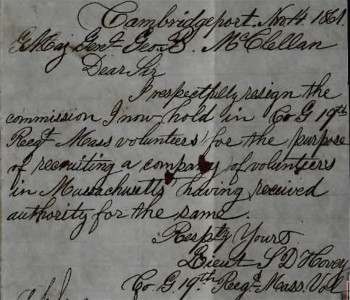
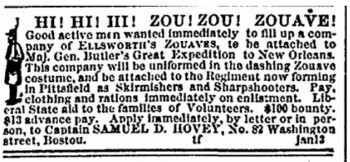
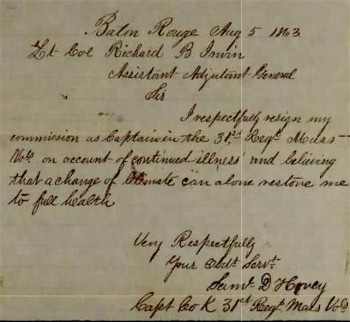
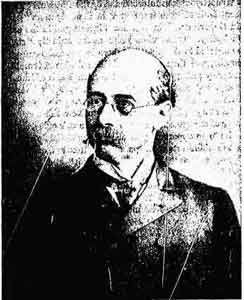
HOWARD, JOHN RAYMOND (1837-1926). Captain and aide-de-camp, United States Volunteers. Howard is not buried at Green-Wood; the cenotaph in his family’s lot honors his memory. Born in Brooklyn in a brownstone on Concord and Washington Streets, his next door neighbors were the father and grandfather of Seth Low, the mayor of Brooklyn and New York City. His life was intimately involved with the Plymouth Church of which his father, John Tasker Howard, was a founder. Joseph Howard (see), the colorful journalist, was his brother. Howard graduated from the University of Rochester, New York, in 1857. An instructor of English grammar, composition and elocution at Polytechnic Institute in 1858-1859, he then traveled to Europe and studied mine engineering in Frieberg, Saxony. According to his passport application of October 7, 1859, he was 5′ 5½” tall with black hair, light hazel eyes, a round chin, florid complexion, full face and medium nose.
Howard returned to the United States at the outbreak of the Civil War. He enlisted and was commissioned as a captain and aide-de-camp in the U.S. Volunteers on September 19, 1861, and promoted to full captain on March 31, 1862. Both Howard and his cousin, Rossiter Raymond (see), served on the staff of General John C. Fremont, who headed the Department of the West which was headquartered in St. Louis, Missouri, and who was a close associate of Howard’s father. Howard also served with Fremont in West Virginia and when Fremont was removed, was sent to Washington, D.C., where he was assigned as a member of the Courts-Martial. According to his obituary in The New York Times, John R. Howard had a close relationship with President Lincoln and also served with General Gustavus A. DeRussy’s Heavy Artillery as division judge advocate. He resigned on February 1, 1865, returned to New York and worked for a short time in a mine engineering office.
Opting for a career in journalism and publishing, Howard was an editorial writer for The New York Times for a short time after the Civil War. He helped found the J. B. Ford & Co. publishing firm in December 1867, which published works by Henry Ward Beecher, Horace Greeley, William Cullen Bryant, Harriet Beecher Stowe and others. That venture failed and, in 1878, was reorganized as Ford, Howard & Hurlburt. In 1881, he moved to Montclair, New Jersey, where he was active on many boards including those for the public library and the public schools. A prolific writer, he recounted his involvement in the Plymouth Church in A Study of Henry Ward Beecher, and compiled numerous anthologies of American essays, poems and orations. In 1907, his pension application was granted under certificate 1,142,829. A member of the editorial board of Webster’s New International Dictionary (his father-in-law was the publisher, George Merriam), he wrote Remembrance of Things Past, an autobiographical account of his life a year before his death. An article in the Brooklyn Daily Eagle on July 27, 1925, included an anecdote from that book about a letter that Howard received from his mother about Grover Cleveland’s victory in the Presidential election. She wrote, “The fact is, the Republican party are dancing mad at their defeat in the election (and the more, because it was practically through a small majority vote in Brooklyn that carried New York State’s large electoral strength to Cleveland). They show it by their desire to turn everybody out that differs from them. Doubtless they would like to turn Mr. Beecher out of Plymouth, only they know it would be turning out their own insides.…” He died at Hampden, Massachusetts, from heart disease. As per his obituary in the Brooklyn Daily Eagle, which confirms his Civil War service, his funeral took place at the home of his daughter, Mrs. Thomas E. Chapin, in Stafford Springs, Connecticut. In 1927, Susan Merriam Howard was granted a widow’s pension, certificate a5-9-27. Section 77, lot 1191.
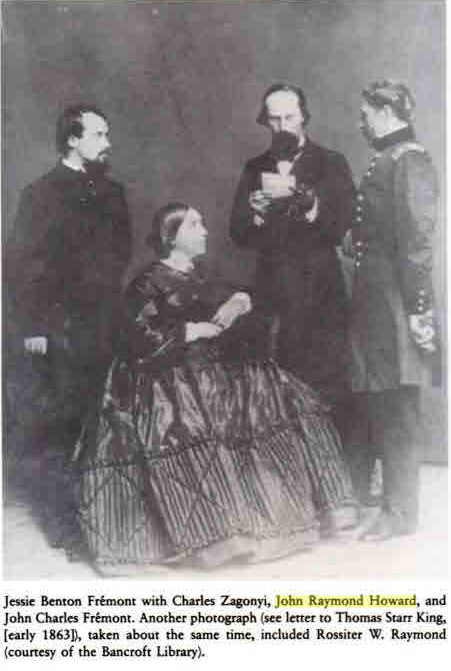
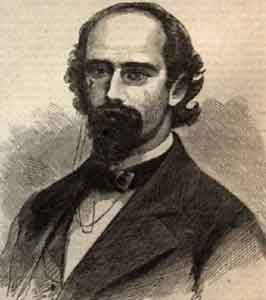
HOWARD, JR., JOSEPH (1833-1908). Journalist and perpetrator of the Great Civil War Gold Hoax. A Brooklynite by birth, his father and grandfather were both religious leaders. Educated in Farmington, Connecticut, he graduated from the Troy Polytechnic Institute in 1857. Although he planned to be a civil engineer, he instead chose journalism, finding adventure in that field while observing a shoemakers’ strike in Lynn, Massachusetts. Pretending to be a reporter for The New York Times, he submitted an article that so impressed the editors that he was offered a full-time position. According to his obituary in The New York Times, Howard became a household name when he accompanied the Prince of Wales, later King Edward VII, on his visit to the United States, sending back colorful and descriptive reports from the cities they explored and the receptions given to the royal guest.
A war correspondent for The New York Times during the Civil War, he reported on the Battles of Bull Run and Ball’s Bluff, both in Virginia. But he gained greater fame for his antics such as submitting a story and then tying up the wires so that other reporters could not access their newspapers with their accounts. In another instance in September 1862, he violated an order prohibiting journalists from attending the funeral of Brigadier General Philip Kearny by sneaking in dressed in clerical robes resulting in his demotion to freelance reporter.

He also used such shenanigans for personal gain. Most notoriously, on May 17, 1864, he and a friend, Francis A. Mallison, a reporter for the Brooklyn Daily Eagle, where Howard was city editor, circulated a false report on stolen Associated Press memo paper stating that General Grant’s Virginia campaign was faltering and that President Lincoln was preparing to order the conscription of 400,000 men. When the story appeared in print in the New York World and the Journal of Commerce the next morning, the price of gold soared eight points and Howard profited $40,000. When the hoax was discovered that afternoon after soldiers carrying bayonets appeared at the editorial offices of the newspapers that reported the falsified report, Joseph Howard was sent as a prisoner of war to Fort Lafayette prison where he was incarcerated for fourteen weeks. The episode became known familiarly as the Great Civil War Gold Hoax or the Bogus Proclamation. His father, John Tasker Howard, a publishing magnate and a founder of the Plymouth Church, sought Henry Ward Beecher’s (see) help in obtaining his son’s release. Beecher, without mentioning any connection to the family, went to Washington, D.C., secured a Presidential pardon on August 22, 1864, and later praised the young man’s family and hoped that the indiscretion could become a moral lesson. President Lincoln later appointed Howard official military recorder for the Eastern District until the end of the Civil War. Howard was present for the trial and execution of John Yates Beall (see) and Robert Cobb Kennedy.
Resuming his career in journalism, Howard was with The New York Times until 1868, then associated with the New York Star, New York Sun, New York Herald, and Brooklyn Daily Eagle covering political events, presidential campaigns and inaugurations, and the opening of the Brooklyn Bridge. One of the founders of the New York Press Club, he served as its president four times and was active in other organizations of journalists. A popular lecturer, he also was president of the International League of Press Clubs. In May 1886, he delivered a well-received two hour lecture of his reminiscences in order to raise money for the repair and beautification of the burial plot of thirteen journalists, maintained by The Press Club, at Cypress Hills Cemetery. He also lectured on Journalism, Cranks and People I Have Met. His brother, John Howard (see), and cousin, Rossiter Raymond (see), served in the Civil War. He last lived in the family apartments at the Nevada in New York City. His death was attributed to valvular cardiac disease. At some point after his funeral at the Plymouth Church, a memorial service for Howard was held at The Press Club’s offices at 120 Nassau Street in Manhattan. Section 77, lot 150.
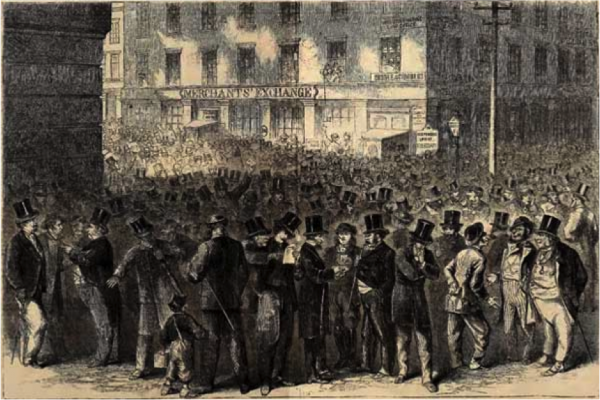
HOWARD, JOSEPH K. (1833-1927). Second lieutenant, 56th Regiment, New York State National Guard, Company E. Howard was born in Maryland. In 1859, he married Ruth McCoumber. Howard enlisted as a second lieutenant at Brooklyn on July 11, 1864, was commissioned into Company E of the 56th Regiment, and mustered out on November 6, 1864, at New York City. During its 100-day activation, the 56th Regiment was assigned to duty at Elmira, New York, where Confederate soldiers were held as prisoners of war.
The 1870 census notes that Howard lived in Brooklyn with his wife and two young children, was a sail-maker and had a personal estate valued at $500. The New York State census for 1875 notes that he lived in Brooklyn with his wife and three children. The 1900 census indicates that he lived on 79th Street in Brooklyn with his wife and adult daughter, Ruth Macomber Howard, and worked as a sail-maker; that census reports his birth year as 1839 but that date is not validated on any other document. In 1900, his application for a pension was approved, certificate 1,018,691. At the time of the 1910 census, Howard lived with his wife of 50 years and their daughter and son-in-law in a house that he owned at 1833 79th Street in Brooklyn; at that time, he worked as a sail-maker at the Brooklyn Navy Yard. The 1925 New York State census reports that he lived with his wife, daughter and son-in-law in Newburgh, New York. As per his obituary in the Brooklyn Daily Eagle, he was a sail-maker at the Brooklyn Navy Yard. Out of town newspapers were asked to print his obituary. Shortly after his death in 1927, Ruth M. Howard applied for and received a widow’s pension, certificate a-5-24-27. Section 117, lot 10975, grave 621.
HOWE, CHARLES H. (1826-1904). Corporal, 7th Regiment, New York State National Guard, Company A. Howe was born in New York. As per the New York State census of 1855, he was married with two young children; his family was living in Manhattan with his father and siblings. After enlisting as a corporal on May 25, 1862, Howe mustered immediately into Company A of the 7th Regiment, and mustered out after serving three months on September 5 at New York City after serving three months. According to the 1880 census, he was married with four children, worked as a painter and lived in Manhattan. He was a member of the G.A.R.’s Alexander Hamilton Post #182. The census of 1900 notes that he was widowed and living with his three daughters in Manhattan. As per his death certificate, he was a retired painter. Section 169, lot 14543.
HOWE (or HAW), CHRISTOPHER B. (1821-1873). Corporal, 90th New York Infantry, Company B. Of Irish origin, Howe enlisted as a private at New York City on November 4, 1861, mustered into the 90th New York two weeks later, and was promoted to corporal on November 12, 1863. He re-enlisted on February 20, 1864, and was discharged for disability on June 3, 1865, at New York City. His last address was 214 11th Street in Brooklyn. He died of consumption. Section 17, lot 17245, grave 848.


HOWE, JR., ELIAS (1819-1867). Inventor of the sewing machine and private, 17th Connecticut Infantry, Company D. Born in Spencer, Massachusetts, one of his ancestors settled in Massachusetts Bay Colony in 1630. As was common early in the 19th century, six-year old Elias went to work alongside his brothers and sisters, sticking wire teeth through leather straps during 16-hour shifts. By 1835, he was in Lowell, Massachusetts, where he learned the manufacture of cotton machinery. Two years later, he left Lowell for Cambridge, Massachusetts, where he apprenticed with Ari Davis, a master mechanic who specialized in precision instruments. Marrying at the age of 21, Howe struggled to support his wife and children, and began to develop mechanical skills. He developed the first efficient sewing machine that he patented in 1846. It sewed five times faster than the swiftest hand sewer at a rate of 250 stitches per minute. However, it was not all that efficient and met resistance from seamstresses and tailors in the United States who feared that his machine would put them out of work. Howe went to England to introduce his machine to the world. Two years later, when he returned destitute to the United States, he discovered that his invention had been pirated and that his wife was dying of consumption; he barely reached her bedside before she died. His obituary notes that he soon found work in New York City superintending the construction of sewing machines. After five years of litigation, in 1854, he triumphed in his patent suit to protect his combination of the eye-pointed needle and a shuttle to form a lock stitch. Thereafter he received a royalty on every sewing machine that was manufactured in this country. His annual income, which only a few years earlier was $300, now grew to $200,000 ($5.5 million today), and he became a millionaire. As per the 1860 census, he lived in Fairfield, Connecticut, with his second wife, Rose, and three children.
During the Civil War, he enlisted as a private at Bridgeport, Connecticut, where he resided, on August 14, 1862, and mustered into Company D of the 17th Connecticut Infantry two weeks later. However, failing health forced his resignation, although one record says that the mustered out on July 19, 1865, at Hilton Head, South Carolina. When the financial strain of the War was heavy on the Union, Howe financed his regiment when the State failed meet the payroll. According to an account, The Colonel and the Soldier (1892), the payment occurred after Howe addressed the assistant paymaster, Stephen A. Walker, and asked when the men, who hadn’t received a cent in three months, would be paid. Walker, not recognizing Howe, replied that it wasn’t the private’s business. Howe, who thought this was an injustice said, “But it is my business and that is why I am here. The men are not treated with the slightest justice, and if the United States ain’t able to pay them, why you can have a draft written on a New York bank for the amount due my regiment.” Walker thought him a “crank” and threatened to call a guard to “fire” him. Howe then said, “Hold off a minute. Take your hands off! I tell you I mean what I say. I belong to the 17th Connecticut and I can afford to pay my regiment if there’s no objection. Something ought to be done and I’m willing to advance the regiment money. My name is Elias Howe.” Walker was then apologetic when he realized that this was no “crank.” (Walker later became the attorney for the Howe Machine Company.) According to another account, Howe also presented each field and staff officer of the 5th Massachusetts Regiment with a stallion fully equipped for service.
In 1865, Howe established the Howe Machine Company in Bridgeport Connecticut, which was operated by his sons-in-law until 1886; between 1854-1871, Elias’s older brother, Amasa, and later his son, Benjamin, owned and operated the Howe Sewing Machine Company in New York City. Howe was awarded the gold medal at the Paris Exposition of 1867 and the Legion of Honor that same year by Napoleon III. As per his obituary in The New York Times, by the time the patent for the sewing machine expired a month before his death, he earned close to $2,000,000 (about $30 million in today’s money) for his invention. He last resided at 8 Willow Street in Brooklyn. His death was attributed to gout and a massive blot clot. The Sewing-Machine Company adopted resolutions of condolence to the family including one that read, “That in the death of Elias Howe, Jr., his country is called to mourn the loss of an inventor of genius and ability, a business man of industry and integrity, a benevolent and kind hearted friend and a citizen of liberality and patriotism.” At first interred in Cambridge Cemetery in Cambridge, Massachusetts, he was re-interred at Green-Wood on March 16, 1890. Section H, lot 19967.
HOWE, SILAS B. (1841-1888). Musician, 37th Regiment, New York State National Guard, Company E. A New Yorker by birth, the 1850 and 1860 censuses report that he was living in Manhattan; the 1850 census notes that his father was a baker and that the family home was valued at $25,000. After enlisting as a musician at New York City on May 29, 1862, he mustered immediately into the 37th Regiment, and mustered out three months later on September 2 at New York City. According to the 1870 census, he was a baker in Manhattan with personal property of $600, and living with his wife and son. As per his obituary in the New York Herald, he was a member of the Veteran Fireman’s Association; members were requested to attend his funeral. Howe last resided at 515 Third Avenue in Manhattan. His death was caused by nephritis. In 1891, Margaret Howe, who is interred with him, applied for a widow’s pension, application 503,723, but there is no evidence that it was certified. Section 66, lot 1762, grave 66.
HOWE, WILLIAM FREDERICK (1821-1902). Lawyer. Born in Boston, Massachusetts, he spent his childhood in England, attended King’s College, and worked in a solicitor’s office. Coming to New York City, he was admitted to the bar in 1859. He soon developed a substantial practice, getting many men released from the Army during the Civil War on writs of habeas corpus, arguing successfully in many such cases that their enlistments were invalid because they were under the influence of alcohol when they signed up. As a result of this work, he became known as “Habeas Corpus Howe.”
Howe was in the fore of criminal law practitioners and developed a reputation for his successful defense of those accused of murder. He convinced a jury that one client, Ella Nelson, had accidentally fired six shots. In his career he defended over 650 individuals whom were so accused. Perhaps his most famous client was Edward S. Stokes, the murderer of James Fisk. Howe was known as the “father of the criminal bar.” His knowledge of the law was legendary, and in 1882 he was selected as one of the two individuals to revise the criminal code of New York State. The chief justice of New York’s highest court said that Howe was “perhaps without peer at the criminal bar,” and another observer wrote that “he left an imprint upon the records of the criminal courts of New York City that no one has ever equaled.” A large man, weighing nearly 250 pounds, he filled the courtroom with his presence and his booming voice, dressed in flashy clothes, including many colored waistcoats and checkered trousers, and as many diamonds as he could wear, except on the last day of a murder trial, when he always appeared dressed in black. Section 194, lot 30004.
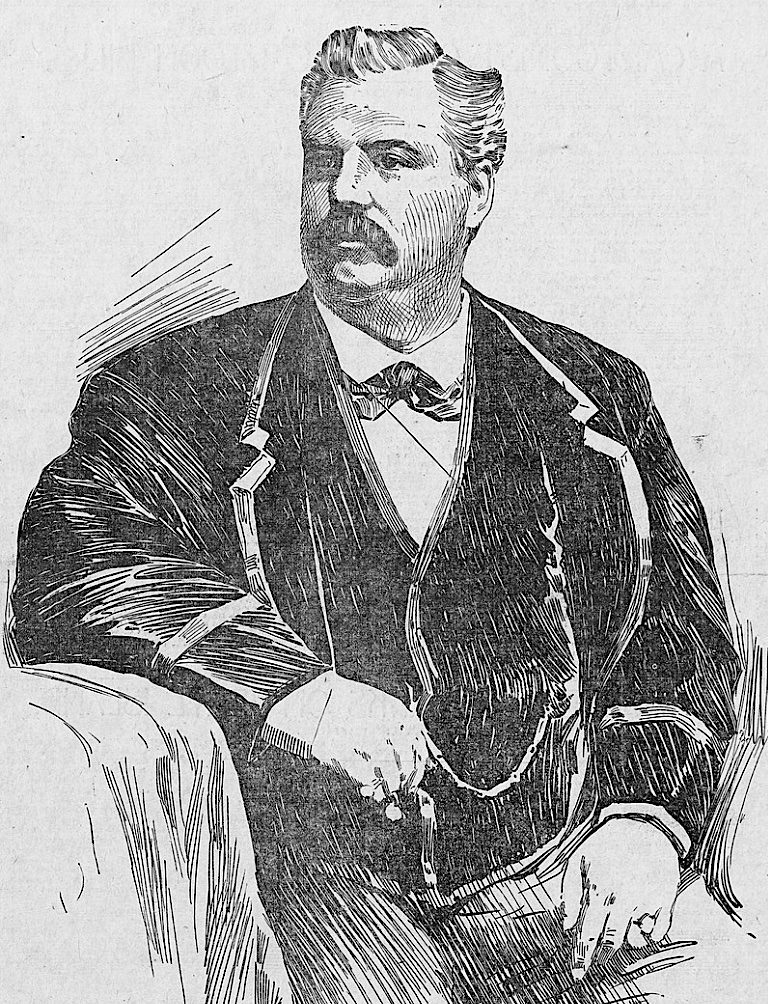
HOWELL, GEORGE W. (1843-1924). Wagoner, 127th New York Infantry, Company A. Howell was born in Suffolk County, New York. During the Civil War, he enlisted as a private at New York City on August 13, 1862, and mustered into the 127th New York on September 8. He was promoted to wagoner on or about April 1, 1863, and was reduced to ranks (private) on June 15, 1864. Howell was wounded on November 30, 1864, at Honey Hill, South Carolina. He mustered out with his company on June 30, 1865, at Charleston, South Carolina. In 1895, he applied for and received an invalid pension, certificate 645,743. According to the New York State census of 1905, he was married, lived in Brooklyn and worked as a messenger at the Navy Yard. The 1915 census reports that he was employed as a government store keeper, lived in Brooklyn with his wife, and was a member of Gouverneur K. Warren Post #286 of the G.A.R. He last lived at 218 Stuyvesant Avenue in Brooklyn. He succumbed to heart disease. Shortly after his death in 1924, Kate Howell applied for and received a widow’s pension, certificate 949,140. Section 134, lot 29725, grave 324.

HOWELL, HORATIO STOCKTON (1820-1863). Chaplain, 90th Pennsylvania Infantry. Howell was born in Trenton, New Jersey. One source states that he graduated from Lafayette College but his biography in The Presbyterian Historical Almanac and Annual Remembrance of the Church, Volume 6 (1864) by Joseph M. Wilson lists him as a graduate of New Jersey College in Princeton, New Jersey. Howell studied theology at New York’s Union Theological Seminary. He served as the pastor of several Pennsylvania and Maryland churches in the 1840s and 1850s. In 1853, he took the helm at a Presbyterian church in the Delaware Water Gap where he served as its minister and taught school. Influenced by his mentor, the Reverend James Wilson, he became a staunch abolitionist convinced of the “wickedness” of slavery.
On March 13, 1862, at Philadelphia, Howell enlisted as a chaplain and was commissioned into the Field and Staff of the 90th Pennsylvania. As per The Presbyterian Historical Almanac, his reputation as a chaplain was “pre-eminent, arduous, zealous, judicious, and devoted to the cause of liberty. He was ever ready to visit the sick, the wounded, and the dying, administering the comfort religion alone can give.” That biography notes that Howell believed in the tenets of the Declaration of Independence that “all men are created equal” and felt that even though the nation was in a dark period caused by slavery, “the future brightens to those who love God and freedom, who hate sin and slavery.” He was killed on the steps of the College Lutheran Church, now called the Christ Lutheran Church, on Chambersburg Street in Gettysburg, Pennsylvania, on July 1, 1863. When Howell came out of the church, which was being used as a hospital for Union wounded, a Confederate soldier shot him. In autumn of 1863, a memorial tablet honoring Howell was dedicated at the Delaware Water Gap. Sergeant Archibald Snow, who was walking behind Howell that fateful day, described what he saw at that dedication ceremony:
I had just had my wound dressed and was leaving through the front door just behind Chaplain Howell, at the same time when the advance skirmishes of the Confederates were coming up the street on a run. Howell, in addition to his shoulder straps & uniform, wore a straight dress sword prescribed in Army Regulations for chaplains….The first skirmisher arrived at the foot of the church steps just as the chaplain and I came out. Placing one foot on the first step the soldier called on the chaplain to surrender, but Howell, instead of throwing up his hands promptly and uttering the usual ‘I surrender,’ attempted some dignified explanation to the effect that he was a noncombatant and as such was exempt from capture, when a shot from the skirmisher’s rifle ended the controversy….The man who fired the shot stood on the exact spot where the memorial tablet has since been erected, and Chaplain Howell fell upon the landing at the top of the steps.
His body was taken back to New York for burial at Green-Wood. The Horse Soldier, an antiques store in Gettysburg specializing in American military memorabilia, offered for sale a handbill from that Delaware Water Gap dedication ceremony in 1863. The handbill, shown below, featured the headline, “No! Never Surrender,” with a song modeled after “Napoleon’s Grave,” with each stanza of six stanzas of eight lines beginning, “NO! Never Surrender!” and telling how Howell stood by the wounded, his death, and how he sleeps in a soldier’s grave. A monument to Chaplain Howell is at the bottom of the Christ Lutheran Church steps which consists of an open Bible on a stand. One side retells Howell’s story; the other side has quotes from the Bible. Section 57, lot 1573.

HOWELL, JOHN SEABURY (1841-1872). Private, 5th New York Infantry, Company K. Howell, a clerk at the start of the Civil War, enlisted on April 25, 1861, at New York City, and mustered into the 5th on May 9. During his military duty, he was sick at Camp Hamilton in 1861, slightly wounded on the left side at Gaines’ Mills, Virginia, on June 27, 1861, and hospitalized with diarrhea at Frederick, Maryland, in September 1862. Nicknamed “Resurrection,” he was noted for his willingness to serve in spite of illness or injury. He mustered out with his company on May 14, 1863, at New York City. His death was caused by phthisis. Section 199, lot 28247, grave 4.
HOWELL, RICHARD H. (1831-1895). Private, 158th New York Infantry, Company I. Irish-born, the 1860 census reports that Howell was a farm-laborer living in Oswego, New York. During the Civil War, Howell enlisted at New York City as a private on December 30, 1863, mustered into the 158th New York on that date, and was discharged from service on May 29, 1865, at the Trenton Barracks in Trenton, New Jersey. A carpenter living in Queens at the time of the 1870 census, he owned real estate valued at $5,000 and personal property worth $400. He mustered into the G.A.R. in February 1884. In 1890, he applied for and was granted an invalid pension under certificate 689,102. As per his death certificate, he was a harness-maker. His last address was 25 Leroy Street in Manhattan. His death was attributed to heart disease. Ann Howell applied for and received a widow’s pension, certificate 412,937. Section 135, lot 27263, grave 2216.
HOWEY, WALTER GEORGE (1839-1893). Sergeant, 6th New York Cavalry, Company B. A New York City native, Howey graduated from the College of the City of New York and worked at his father’s business until the outbreak of the Civil War. Howey enlisted as a private at New York City on August 29, 1862, and mustered that day into the 6th New York Cavalry. As per his muster roll, Howey was a horse-shoer by trade who was 5′ 6″ tall with blue eyes, auburn hair and a fair complexion. He was promoted to corporal on December 1, 1862. His muster roll records that he was taken as a prisoner of war at Spotsylvania Court House, Virginia, on April 30, 1863, and was released the next month on May 16 at an unspecified location. However, according to an article about his death in the New York Herald on July 3, 1893, he was a prisoner at the infamous Libby Prison in Richmond, Virginia, for more than a year, and contracted a disease there which ultimately caused his death; his obituaries in the New York Tribune and the Brooklyn Daily Eagle confirm his incarceration at Libby Prison. On April 6, 1864, he was promoted to sergeant, and mustered out on June 5, 1865, at Cloud’s Mills, Virginia.
In civilian life, Howey was the superintendent of the Brooklyn Water Works and then led the construction of the Franklin Avenue Railroad which he later superintended. He subsequently was the superintendent of the Prospect Park and Green-Wood Cemetery Railroad and then was superintendent of the Grand Street and Newtown Railroad but retired when it was bought by the Brooklyn City Railroad. An article in the Brooklyn Daily Eagle on April 27, 1888, reports that while Howey was in his office of the Grand Street Railroad, he was robbed of a silver watch worth $10, a breast pin worth $5.00, and $80.00 in cash; the thief was apprehended after a police report and the silver watch was recovered. His application for an invalid pension was approved in 1892, certificate 1,034,416. Howey changed his political affiliation from Democrat to Republican about ten years before his death. He was a member of the Hanover Club and the Amphion Singing Society. His obituary in the New York Herald notes that associates of the Grand Street and Newtown Railroad and members of Veteran Association of the 6th Cavalry were invited to attend his funeral. He last resided at 77 South 8th Street in Brooklyn. He died three months after suffering a paralytic stroke; he had been unconscious during that time. His obituary in the New York Herald noted that the malaria that he contracted at Libby Prison eventually became dropsy (edema or swelling of the soft tissues) and finally, paralysis. His wife applied for and received a widow’s pension, certificate 663,411. Section 200, lot 23935, grave 3.
HOWLAND, RAY (1839-1910). Private, 8th Regiment, New York State National Guard, Company H. Howland was born in Peekskill, New York. After enlisting as a private at New York City on May 29, 1862, Howland immediately mustered into the 8th Regiment from which he was discharged with his company three months later on September 10 at New York City. In 1908, his pension application was approved under certificate 1,145,844. His obituary in the Brooklyn Daily Eagle confirmed his military service in the Civil War and noted that he was employed as a Custom House weigher. He last lived at 246 Adelphi Street in Brooklyn. Howland died of heart disease. Emily Howland, who is interred with him, applied for and received a widow’s pension in 1911, certificate 717,933. Section 138, lot 26673, grave 1.
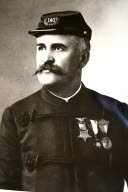
HOWLETT, HENRY JAMES (1845-1918). Private, 87th Ohio Infantry, Company G. Howlett lived in Euclid, Ohio, at the time of the 1860 census. During the Civil War, he enlisted on May 29, 1862, mustered into the 87th Ohio, a regiment organized for three months of service, on June 10, and mustered out on October 3. Howlett’s name appears on the Official Roster of the Soldiers of the State of Ohio in the War of the Rebellion. On October 6, 1869, he married Edith Leach in Sunderland, Massachusetts. He eventually moved to Brooklyn, where he was a paper manufacturer. In 1905, Howlett’s application for a pension was approved, certificate 1,113,701. The 1915 New York State census reports that he was married and lived in Brooklyn. He last lived at 250 Washington Avenue in Brooklyn. Shortly after his death in 1918 from heart valve problems, Edith Howlett applied for and received a widow’s pension, certificate 864,353. Section 107, lot 8021.
HOWLETT, JOHN C. (1833-1886). Private, 71st Regiment, New York State Militia, Company H. Howlett, who was born in New York City, served with the 71st Regiment for three months in 1861. His last address was 111 East 85th Street in Manhattan. His accidental death was caused by being hit by a plank. In 1890, Catharine Howlett, who is interred with him, applied for and received a widow’s pension, certificate 301,736. Section 203, lot 26044.
HOXIE, WILLIAM E. (1831-1915). Private, 7th New York State Militia, Company C. A native of New York City, he was a clerk living at home with his parents and siblings at the time of the 1855 New York State census. During the Civil War, Hoxie enlisted at New York City as a private on April 30, 1861, mustered into the 7th Regiment, and mustered out with his company on June 3, 1861. As per the Civil War Registration Records, 1863-1865, he lived on Fort Greene Place and was in the insurance business. The 1880 census states that he was living in Ridgefield, New Jersey, and working as a fire insurance broker. On April 20, 1886, Hoxie mustered into Marquis de Lafayette Post #140 of the G.A.R. At that time he was an insurance broker living at 195 Greene Avenue in Brooklyn. The 1910 census indicates that he was a widower and a lodger. He last lived at 1317 Dean Street in Brooklyn. His death attributed to pulmonary congestion. Section 29, lot 9758.

HUBBARD, CYRUS C. (1834-1896). Captain, 83rd New York Infantry, Company C. Hubbard, who was 5’5″ tall, enlisted and mustered into the 83rd as a sergeant at New York City on May 27, 1861. He received promotions to second lieutenant on June 16, 1862, and to first lieutenant on August 8, 1862. In December 1862, after the Battle of Fredericksburg, Virginia, he began suffering from the effects of an inguinal hernia that disabled him on several occasions and temporarily relieved him of military duty. He returned to the 83rd in September 1863, and mustered in as a captain the next month on October 21. Hubbard mustered out on June 23, 1864, at New York City. He applied for and received an invalid pension in 1879, certificate 194,657. As per his death certificate, he was single and worked as a clerk. His last residence was 21 University Place in New York City. His death was caused by phthisis. Section 67, lot 1566.
HUBBARD, NORMAN (1825-1902). Sergeant, 13th Regiment, New York State Militia, Company C. Hubbard was a great-grandson of Captain Isaac Hubbard of the Concord, New Hampshire, Minute Men in the Revolutionary War. Born in Fulton, New York, he came to Brooklyn in 1841 to become an apprentice at the Burden Iron Works; he rose to partner in 1855. During the Civil War, he served as a sergeant when the 13th Regiment was activated for three months in 1861. As per his obituary in the Brooklyn Daily Eagle, he maintained his position as an iron manufacturer until almost the end of his life, turning over the leadership of his business to his son in 1900. He was a member of the 13th Veterans’ Association and the Odd Fellows. He last lived at 150 Halsey Street in Brooklyn. He succumbed to diabetes. Section 2, lot 12614.
HUBBS, JESSE MORTIMER (1838-1877). Sergeant, 11th New York Infantry, Company D; 71st New York Infantry, Company D. Hubbs was born in New York City. The 1850 census indicates he lived with his parents, siblings and others in New York City; the 1860 census lists him as a machinist living in New York City. During the Civil War, Hubbs enlisted at New York City as a corporal on April 20, 1861, and mustered into the 11th New York on May 7. His muster roll indicates that he was promoted to sergeant during his service but deserted on September 19 of that year. However, the notation of desertion may be inaccurate because his soldier record reports that he mustered out of the 11th New York on September 19, 1861. He also served in the 71st New York Infantry, mustering in as a corporal and mustering out as a sergeant; the dates of that service are not known.
Hubbs is listed as a machinist living at 42 Marion Street in the annual report of the chief engineer of the New York City Fire Department for 1862. As noted in the aforementioned report of the Manhattan Engine Company No. 8 at 91 Ludlow Street, the house was reported to be in good condition with a steam-engine, 9″ steam-cylinder, 8½” stroke, 12½” diameter pump, hose and wood-tender in good working order; 50 men attached to the engine company and 6oo feet of rubber hose, and 400 feet of Boyd’s (rubber-lined and cotton-webbed) hose were available. The New York City Directory for 1867 lists Hubbs as a machinist; the 1876 New York City Directory lists him as an engineer whose home address was 408 West 40th Street. As per his death certificate, he was married and was a mechanic. Hubbs’s obituary in the New York Herald reports that he was a Freemason; members of his lodge were invited to attend his funeral. His last residence was at 408 West 40th Street in Manhattan. His death was attributed to phthisis. Section 176, lot 20999.
HUCHTHAUSEN (or HUCHTBAUSEN), WILLIAM (or WILHELM) A. (1838-1885). First sergeant, 8th New York Infantry, Companies K and C. A native of Braunschweig (Brunswick) Germany, Huchthausen immigrated to the United States and arrived in New York City on January 3, 1859. During the Civil War, he enlisted as a private on April 23, 1861, mustered into Company K of the 8th New York Infantry and was transferred to Company C as an artificer on an unknown date. Rising through the ranks, Huchthausen became a corporal in April 1862, sergeant on June 8, 1862, and first sergeant on November 13, 1862. He mustered out with his company on April 23, 1863. Huchthausen became a naturalized citizen on October 28, 1870. On May 13, 1875, he mustered into the Frank Head Post #16 of the G.A.R.; at that time, he lived in Brooklyn and worked as a clerk. The 1880 census reports that he was married, worked in dry goods, and lived at 635 3rd Street in Brooklyn. He last lived in Brooklyn. His death was attributed to cirrhosis. Section 183, lot 21319.
HUDSON, HENRY A. (1842-1903). Mate, United States Navy. A native of Jersey City, Hudson joined the Navy as a mate on December 26, 1862. After resigning on June 2, 1863, he was reappointed on November 9 of that year, and was honorably discharged on May 26, 1864. He last resided at 893 Broad Street in Newark, New Jersey, where he died from diabetes. Section 81, lot 2922, grave 14.
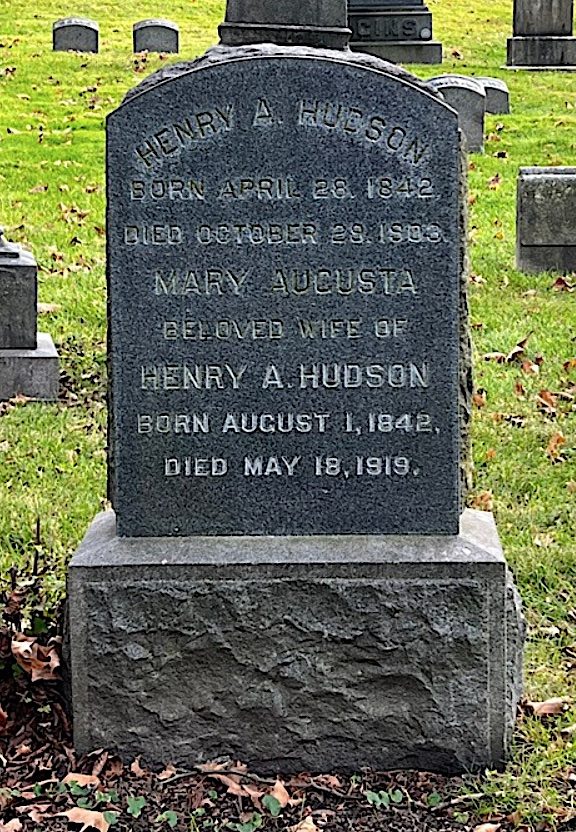
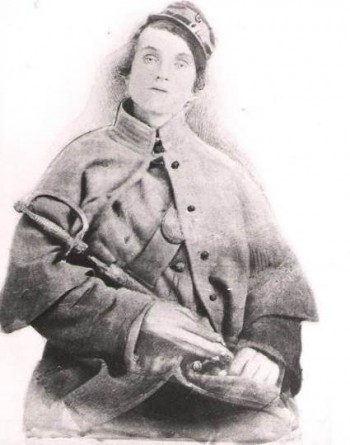
HUDSON, JOSEPH (1842-1875). Sergeant, 62nd New York Infantry, Company C. A native New Yorker, Hudson enlisted there as a private on May 25, 1861, and mustered into the 62nd Infantry on July 3. He was promoted to sergeant on August 15, 1861, and was reduced in rank to private on November 15. Hudson was soon promoted to corporal on November 28, but was subsequently dishonorably discharged on September 3, 1862. His muster roll indicates that he deserted on that date at Fort Ethan Allen in Washington, D.C. His muster roll also states that he was “dishonorably discharged to date from September 3, 1862, with loss of all pay, bounty, and all resources per Special Order 192, Department of the East. Co. & Regt’l records furnish no further information.” Although he applied for an invalid pension on April 9, 1863, application 17,498, it was never certified. His last residence was at 244 West 33rd Street in Manhattan. The cause of his death was phthisis. He was originally interred in lot 17263 but on December 14, 1898, he was moved and placed beside his mother. Section 200, lot 25565.
HUDSON, WILLIAM LEVERRETH (1794-1862). Captain, United States Navy. Born in Brooklyn, Hudson enlisted in the United States Navy in 1815 and was appointed midshipman on January 1, 1816. He first served in the Mediterranean Squadron aboard the schooner Alert and the sloop-of war Ontario until 1817. His next duty was aboard the Dolphin on the Pacific coast of South America from 1821-1823. Hudson was promoted to lieutenant on April 28, 1826, and then served on the Warren in the Mediterranean from 1826-1829. After a tour in Russia from 1830-1831, he was stationed at the New York Navy Yard. In June 1838, he was ordered to command the Peacock as part of Commander Charles Wilkes’s expedition of the Antarctic, South Seas, and coast of North America; he was second in command of the expedition. On July 18, 1841, the Peacock was wrecked while attempting to enter the Columbia River as per Wilkes’s order. Hudson was unable to save his ship but all the men and the scientific papers were saved. He rose to commander on November 2, 1842, was on shore and lighthouse duty until 1849 when he was put in command of the Vincennes and cruised the Pacific until 1852. After Hudson was appointed captain on September 14, 1855, he assumed command of the Niagara in March 1857. Together with British ships, he attempted to lay the first Transatlantic cable in August of that year; although the first attempt failed, they were successful a year later on August 10, 1858. He was awarded gifts from the British and Russian governments for his success in the Atlantic cable expedition.
Subsequently, Hudson commanded the Boston Navy Yard until 1862 when he was appointed inspector of the 3rd Lighthouse District. As per his obituary in the Journal of the American Temperance Union, he was a man of few words but gave impressive speeches in favor of temperance and advocated the removal of the spirit ration from the Navy. In offering their condolences, his comrades wrote of him in one of their resolutions, “…We treasure his private and public character, his life of private virtue and public and exalted patriotism, as among the most precious of our possessions, and that we lament with profound sorrow the loss the naval service of the country has sustained at a moment when that arm is about to put forth the most extraordinary manifestations of its prowess, and when new opportunities would have assured him new distinctions for skill, gallantry, and devotion in defense of a flag and a country that he loved and honored.” Officers of the Brooklyn Navy Yard were requested to attend his funeral at St. Ann’s Church in Brooklyn Heights in “undress uniform” (civilian attire). His last residence was with his son-in-law at 54 Montague Street in Brooklyn-near St. Ann’s. His cause of death was pulmonary congestion. Three ships have been named the USS Hudson in his honor. A collection of his letters to his wife and family from the Vincennes is housed in the University of Michigan Library. Section 77, lot 3465.


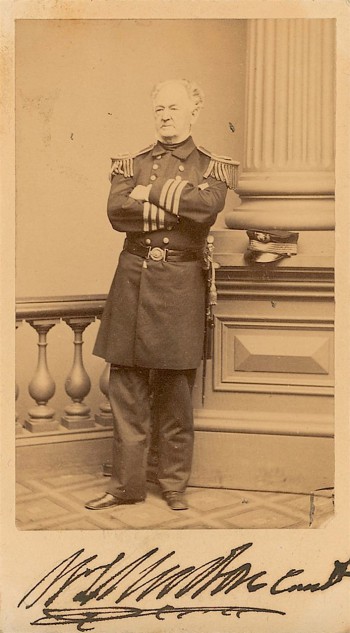
HUESTIS, CHARLES H. (1838-1928). Private, 71st Regiment, New York State Militia, Company A. Huestis, who was born in Tuckahoe, New York, enlisted on April 19, 1861, mustered in on May 3, and served until July 31, 1861. His gravestone identifies him as a major and member of the G.A.R. He last lived in Lakewood, New Jersey. His death was caused by apoplexy. His funeral services were held in the chapel at Green-Wood. Section 20, lot 4478.
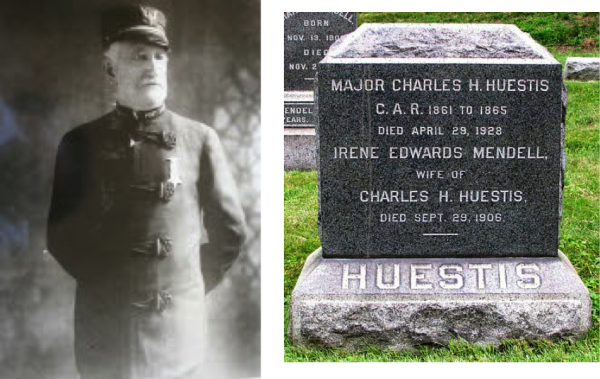
HUESTON, JAMES COOPER (1841-1893). Private, 3rd Louisiana Infantry, Company K, Confederate States of America. A native of Baton Rouge, Louisiana, Hueston’s father was a Massachusetts native who relocated to Louisiana circa 1840 to become the editor of the Baton Rouge Gazette; his father died in a duel with a rival editor (date unknown). James Hueston’s birth year is unclear. Although his obituary gives a birth year of 1841, his enlistment records in 1861 indicate that he was seventeen then; subsequently, he was discharged in July 1862 because he was underage. As per his biography by the class historian in the Princeton Record of 1903 (fortieth anniversary of the class of 1863), James Hueston studied at Baton Rouge College Institute and Oakland College in Mississippi, and was a freshman at Princeton in 1861 before he left to join the Confederate Army. The 1860 census reports that he was a 17 year-old who lived in Princeton, New Jersey. Hueston wrote in 1866 of his Princeton classmates, “…Though with the Class but one year—its youngest, but, I dare say, not its most uneventful one—and though a stranger to most of those who enjoyed the high privilege of spending with the peaceful shades of ‘Nassau Hall’ those other years, so full of fearful strife, I yet cherish the kindest sentiments towards one and all. Those days I spent with my brethren of the Class of ’63, were among the happiest of my life.” Although his obituary in the New York Herald reports that he graduated from Princeton, that information is not confirmed in his aforementioned biography in Princeton’s journal.
During the Civil War, Hueston enlisted as a private for nine months on August 4, 1861, and joined Company K of the 3rd Louisiana Infantry, a company composed of fellow townspeople and known familiarly as the Pelican Rifles. He was 5′ 6″ tall with grey eyes, and a dark complexion at the time of his enrollment. As per his Princeton biography, his unit was sent to Missouri where it fought at the Battles of Elk’s Horn and Oak Hill. His muster roll of August 1861 confirms that he was in Crane Creek, Missouri, a distance of 1,200 miles from Louisiana. Not very hearty, he was ill from the hardships of the battlefront and during his convalescence, learned telegraphy from his half-brother. He soon became an expert telegrapher and was detailed to the Confederate Military Telegraph Corps where he served throughout the war. His biography reports that he also participated in the Battle of Farmerville. On July 16, 1862, he was owed $84.61 at the expiration of his term for pay, shoes, and transportation expenses; he was paid $60.66 for travel to Crane Creek, Missouri. He was discharged because he was underage, having been seventeen at the time of his enlistment. However, when he returned home, Louisiana was in the hands of the Union and he remained with the Confederate government as a telegraph operator. His obituary in The New York Times confirms that he served as a telegrapher throughout the rest of the War.
After the Civil War, Hueston was employed by the New York Associated Press, first in Louisiana and then in New York City, starting in 1867, as assistant general manager of that organization. While serving in New York, he graduated from the Columbia College of Law. He was sent to London, England, as branch manager in 1875 where he married the daughter of a former mayor of Portland, Oregon, then returned to New York City to become the general manager of the New York Associated Press in 1880. After resigning due to ill health in 1882, he practiced law and was general counsel for the Baltimore and Ohio Railroad. Active in the Democratic Party, he campaigned in the South for Grover Cleveland. He was also a Freemason and held the position of master. On February 28, 1885, Representative Charles A. Sumner of California, in an address to Congress, called for an investigation into the role of the Associated Press and Western Union in the electoral count of 1884. Sumner said that Hueston could testify as to “the diabolical scheme for changing the true count of the ballots in the Empire State.” As per his death certificate, which gives a birth year circa 1844, he was a retired journalist who had lived in New York City for twenty-five years. His last residence was 20 East 20th Street in Manhattan. His obituary in the New York Tribune, which confirms his Civil War service for the “Southern army,” indicates that he died from cerebral meningitis; that obituary also reports that his Masonic comrades escorted his body to Green-Wood and conducted its fraternal service. Originally interred at Green-Wood on October 12, 1893, his ashes were interred at the present location on April 21, 1914. Section 6, lot 33862, grave 2.

HUGHES, MICHAEL (1823-1889). Private, 139th New York Infantry, Company F. Hughes’s birthplace is unclear. He indicated on his paperwork at the Kings County Almshouse that he was born in Brooklyn; however, the Green-Wood database and the censuses of 1870 and 1880 indicate that he was born in Ireland. Hughes enlisted on August 21, 1862, at Brooklyn, mustered into the 139th on September 9, and was wounded at the Battle of Cold Harbor, Virginia, on June 2, 1864. He mustered out with his company on June 19, 1865, at Richmond, Virginia.
As per the 1870 census, Hughes lived in Brooklyn with his wife and four children. In 1879, his application for an invalid pension was approved, certificate 193,013. The 1880 census reports that he was a tinsmith and lived in Brooklyn with his wife and two 18-year-old daughters. On November 8, 1883, he was in the Kings County Almshouse citing dependency because of a loss of his foot; he indicated that he had previously been at the Long Island College Hospital for eight months (no dates given). On that aforementioned document, he stated that he was married, had five self-supporting children, and was a tinsmith. His recovery from his dependency was listed as “doubtful.” Hughes’s paperwork for the Home for Disabled Soldiers at Hampton, Virginia, notes that he was a tinsmith. His last known residence was 102 12th Street in Brooklyn but he died in Hampton, Virginia, on August 7, 1889; his pension index card lists the date of death as August 7, 1890, but that is incorrect. The cause of his death was apoplexy. Eliza Hughes applied for and received a widow’s pension as of October 8, 1890, certificate 316,112. Interment at Green-Wood was on February 22, 1891. Section 206, lot 21347, grave 629.
HUGHES, THOMAS (1843-1871). Unknown soldier history. Originally from Scotland, he last lived at 162 24th Street in Brooklyn. His death was caused by consumption. Section 86, lot 18066, grave 15.
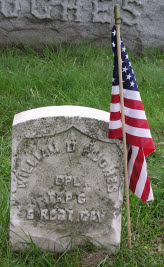
HUGHES, WILLIAM D. (1842-1908). Private, 4th Regiment, Missouri State Cavalry, Company I. Born in Lee, Iowa, and a butcher by trade, Hughes enlisted at Jefferson City, Missouri, on February 1, 1862, and served in Company I of the 4th Missouri Cavalry. According to his company’s sketchbook, he was 5′ 5″ tall with blue eyes, red hair and a light complexion. Hughes’s muster roll for September and October 1863 notes that he was detached to Marshall, Missouri, and that his horse was valued at $85. He appeared on the hospital muster roll for May and June of 1864; that document states that he was last paid on October 31, 1863, and returned to duty on June 9, 1864. In January and February of 1865, Hughes’s muster roll notes that he was detached to Sedalia, Missouri, and that he had to forfeit $50.80, two months pay, by order of the general court-martial in September 1864; his papers at muster out indicate that he was overpaid in August 1863. He mustered out on January 31, 1865, at the expiration of his service. He later served as a corporal in the 5th Missouri Cavalry from June 21, 1867 through March 27, 1869; the service during his second enlistment is inscribed on his gravestone. His death was attributed to nephritis.On July 5, 1957, Lord Randolph Churchill Hughes of 3178 Bayview Avenue in Brooklyn applied for a veteran’s headstone with Christian emblem citing William Hughes’s military service. Section J, lot 32875.
HULL, ALEXANDER (1826-1884). Captain and assistant quartermaster, United States Volunteers Quartermaster’s Department; first lieutenant and quartermaster, 35th New York Infantry. Born in New York, Hull enlisted as a first lieutenant at Washington, D.C., on July 1, 1861, was commissioned into the 35th New York Infantry’s Field and Staff as a first lieutenant and quartermaster on July 21, and mustered out on June 5, 1863, at Elmira, New York. On February 29, 1864, he was promoted to captain and assistant quartermaster and commissioned into the United States Volunteers Quartermaster’s Department serving there until he mustered out on October 23, 1865. His last residence was 491 3rd Street in Brooklyn. He died from complications of an abscess of his leg. Section 90, lot 772.

HULL, CHARLES JOSEPH (1850-1891). Private, 12th New York Cavalry, Company L. Hull was born in Brooklyn. According to a descendant, he travelled to enlist at Tompkinsville, Staten Island, in 1864, when he was only 14, and he lied about his age and his name, using the names, “George F. Hull” or “Joseph Hull,” so that he could enlist. As indicated by the muster roll, he said he was an 18 year old farmer. He was 5′ 2½” tall with blue eyes, light hair and a light complexion when he enrolled and mustered in on September 26, 1864, collecting a bounty of $33. Using the name, Joseph Hull, he served with the 12th New York Cavalry being on detached service at Plymouth, North Carolina, as of December 17, and was discharged in June 1865, as per General Order No. 85.
The 1880 census reports that he lived at 756 Third Avenue in Brooklyn with his wife and two young children and worked in the restaurant business. Hull moved to Montana around 1880, moved back to New York, and was killed, along with his brother, Richard, in a railroad accident in Baltimore, Maryland. According to an article in the Baltimore Sun on April 7, 1891, the two men, roving musicians, were tramping along the tracks of the Baltimore & Ohio Railroad from New York to St. Louis when they were struck by an express train from Washington, D.C., and thrown against an embankment; Richard was killed instantly and Charles, who was struck by the locomotive’s steps, suffered six broken ribs and a broken leg and died two hours later. Before his death, Charles Hull, who was taken to Maryland General Hospital, said that he had not heard the warning whistle blown by the train’s engineer; the railroad was exonerated of wrong-doing in the accidental death. The Sun reported that the Richard Hull had a well-written diary on his person recording the brothers’ travels and indicating that they had left New York at the end of March and obtained meals of cheese, crackers and sardines after playing the banjo. That same article reported that Richard Hull had family in Montana and that the mother of the brothers, who lived in Philadelphia, was coming to Maryland to claim his body. The Brooklyn Daily Eagle article went on to report that the bodies were embalmed, placed in coffins and transported to Brooklyn by railroad. Charles Hull last lived at 220½ 22nd Street in Brooklyn. The inscription on his tombstone confirms his service with the 12th Cavalry. On September 23, 1891, Georgeanna Lake, guardian, applied for and received a pension for a minor, certificate 383,199. Section 114, lot 8999, grave 419.
HULL (or HALL), JOHN HENRY (1838-1904). Captain, 174th New York Infantry, Company H; unknown rank, 7th New York State Militia, Company H. A native of Eastchester, New York, Hull was also known as John Hall on his soldier records. During the Civil War, he first served with the 7th Regiment and upon their return home recruited a company and enlisted on August 22, 1862, as captain of the 174th New York. He served with General Nathaniel Banks at New Orleans, was part of the Red River Expedition, and was stationed at Baton Rouge, Louisiana. Hull was with General Ulysses S. Grant at the storming of Fort Hudson and the taking of Vicksburg, Mississippi. Disabled by rheumatism, he was disqualified from active service, returned home on an unspecified date, and resumed his practice of law.
Although Hull applied for an invalid pension in 1880, application 391,101, there is no evidence that it was certified. On March 16, 1888, he mustered into the Marquis de Lafayette Post #140 of the G.A.R.; he indicated that he was a lawyer living at 225 West 49th Street in Manhattan. When he applied for a passport in 1896, he was 5′ 5½” tall with blue eyes, gray hair, a broad nose and forehead, round chin, round face, and florid complexion. Hull was active in many organizations including the Freemasons, the Military Order of the Loyal Legion, the 7th Regiment Veterans, the New York State Bar Association, the Lotus Club and the Republican Club. He also had an interest in the arts and was a patron of American artists, one of the founders of the Palette Club of New York, and the founder of the Reine Fund Society of P.S. 9 in Brooklyn. Sarah Hull applied for and received a widow’s pension in 1909, certificate 685,020. Section 207, lot 21922.
HUME, WILLIAM HENRY (1834-1899). First lieutenant, 7th Regiment, New York State National Guard, Company A. Born in New York City, Hume studied architecture there. During the Civil War, he served as a first lieutenant with the 7th Regiment of the New York State National Guard for three months in 1862. Many buildings in New York City are of his design including the New Netherland Hotel, the Emigrant Savings Bank, the North River Savings Bank, the Hotel Normandie, the Spingler Building, the Presbyterian Church and Lecture Hall on Central Park West, the Hebrew Orphan Asylum, and the Lotos Clubhouse. Hume last lived at 82 East 79th Street in Manhattan. His death is attributed to epithelioma, a type of skin cancer. Section 111, lot 13472, grave 1.
HUMPHREY, ALVIN H. (1840-1871). Sergeant, United States Army General Service. Originally from Maine, Humphrey enlisted as a private on September 15, 1862, at Washington, D.C., and mustered there into the United States Army General Service as a clerk. His paperwork notes that he was 5′ 7½” tall with blue eyes, light hair and a light complexion. He was promoted to sergeant at some point, and was discharged from Washington, D.C., on March 31, 1864, when he was appointed as sergeant clerk in the Adjutant General’s Office of the United States Army. As per his death certificate, Humphrey was unmarried and worked as a manufacturer. His obituary in the New York World indicates that his funeral was held at Dr. Chapin’s church on Fifth Avenue and 45th Street. His last residence was in Bloomingdale, New York. Section 118, lot 11458.
HUMPHREY, CHARLES (1822-1908). First sergeant, 133rd New York Infantry, Company B. A native New Yorker, Humphrey enlisted as a corporal on August 15, 1862, mustered into Company B of the 133rd New York on September 24, and was wounded in action at Port Hudson, Louisiana, on June 14, 1863. He was promoted to sergeant on October 15, 1864, and to first sergeant on an unknown date before he mustered out with his company on June 6, 1865, at Washington, D.C. His application for an invalid pension was approved in 1871, certificate 119,466. On March 15, 1887, Humphrey mustered into the John Adams Dix Post #135 of the G.A.R.; he listed his profession as confectioner. At the time of his death, he was a resident at the Masonic Home in Utica, New York. His death was attributed to cardiac asthenia. Section 200, lot 23682, grave 2.
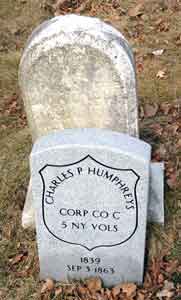
HUMPHREYS (or HUMPHREY), CHARLES P. (1839-1863). Corporal, 5th New York Infantry, Company C. Although one document reports that Humphreys was a native of New York City, his muster roll states that he was born in Philadelphia, Pennsylvania. At the onset of the Civil War, he resided at 80 West 24th Street in Manhattan. A clerk by trade, he enlisted at New York City as a private on April 25, 1861, mustered into the 5th on May 9, and was promoted to corporal on October 29. After being wounded at Second Bull Run, Virginia, on August 30, 1862, when the 5th New York was overrun by vastly superior numbers, he succumbed four days later at Carver Hospital in Washington, D.C. Although one soldier record correctly reports that he did not survive the hostilities, that record incorrectly notes that he mustered out on September 3, 1862, at Washington, D.C.; that is in fact his date of death. At the time of his death, his effects consisted of one blanket and postage stamps.
Originally buried at Soldiers Home National Cemetery in Washington, D.C., he was re-interred at Green-Wood on September 10, 1863. On September 18, 1862, Anneliza Humphreys, his forty-seven year old mother, appeared before the Court of Common Pleas of the City of New York asking for a survivor’s pension, application 25,031. She declared that she was wholly dependent for support and that her son had left no widow or minor child under sixteen years of age. Further, Mrs. Humphreys declared that she has not “been engaged in, or aided or abetted the rebellion of the United States” and has not received any pension. Her pension was granted on June 18, 1863, certificate 10,603. A marble Veterans Administration stone was ordered for him early in the 20th century. Section 115, lot 13536 (Soldiers’ Lot), grave 40.
HUMPHREYS (or HUMPHREY, HUMPHRAY, HUMPHERY), DAVID (1837-1906). First lieutenant and regimental quartermaster, 85th Ohio Infantry; first lieutenant, 125th Ohio Infantry, Company F. Originally from Radnor in Delaware County, Ohio, Humphreys was a graduate of Ohio Wesleyan University where he obtained a Master of Arts degree. During the Civil War, he enlisted as a first lieutenant on June 10, 1862, and was commissioned that day into the Field and Staff of the 85th Ohio as a first lieutenant and quartermaster. He mustered out after three months on September 23, 1862, at Camp Chase, Ohio. On September 24, he re-enlisted as a private, was promoted to first lieutenant on November 13, mustered into the 125th Ohio on December 17, and resigned on October 6, 1863.
The 1880 census reports that Humphreys lived in Delhi in Hamilton County, Ohio, was married with three children and was a lawyer. As per the census of 1900, he lived at his own home at 419 Henry Street in Brooklyn, was employed as a lawyer, and had been married for thirty-seven years. In 1904, he applied for and received an invalid pension, certificate 1,102,800. Humphreys was a member of the G.A.R.’s Frank Head Post #16 in Brooklyn. His death certificate indicates that he was married and was a lawyer. His last residence was 303 Carlton Avenue in Brooklyn. His death was caused by nephritis. In 1909, his wife applied for and received a widow’s pension, certificate 704,985. Section 131, lot 32348, graves 1 and 2.
HUMPHREYS (or HUMPHRIES), GEORGE D. (1839-1862). First lieutenant, 40th Illinois Infantry, Company H. Born in New York and a resident of Mount Carmel, Illinois, Humphreys enlisted as a first lieutenant at Xenia, Illinois, on July 25, 1861, and was commissioned into the 40th Illinois on August 10 at Camp Butler, Illinois. Unmarried and employed as a tradesman, he was 5′ 11″ tall with gray eyes, light hair and a fair complexion. As per the History of the Fortieth Illinois Infantry by Ephraim J. Hart, he was wounded at the Battle of Shiloh, Tennessee, on April 6, 1862, and died at Cincinnati, Ohio, on May 2, 1862. Humphreys was interred at Green-Wood on May 31. In 1888, his mother applied for and received a survivor’s pension, certificate 247,617. Section 107, lot 911.
HUMPHREYS, GEORGE HOPPIN (1834-1898). Surgeon, 9th New York Infantry. Originally from Philadelphia, Pennsylvania, Humphrey studied at the University of Pennsylvania and graduated from Jefferson Medical College (now the Sidney Kimmel Medical College) there. According to his obituary in The New York Times, he completed his medical studies in Paris and Vienna. As per The Ninth Regiment, New York Volunteers (Hawkins’ Zouaves): Being a History by Matthew John Graham, he served with the British Army during the Crimean War in the 1850s and served with the French Army in its war with Austria in 1859. Humphrey settled in New York City that same year.
After enlisting as a surgeon at New York City on May 4, 1861, he was immediately commissioned into the Field and Staff of the 9th New York, also known as Hawkins Zouaves. As of December 31, 1862, he was acting division surgeon. In his report from Suffolk, Virginia, on May 12, 1863, Brigadier General George W. Getty, United States Army, praised Humphreys for his actions as medical director in responding to emergencies on the field. His obituary notes that he is singled out in the history of The Hawkins Zouaves, Their Battles and Marches (1866) written by his comrade John H. Whitney (see): “Surgeon Humphreys was one of the most valuable officers in the regiment, and upon all occasions during battle he attended to the wounded while it was going on, and in his anxiety to relieve others seemed wholly unconscious of all danger to himself. The regiment was proud of him, and boasted that he could do as much ‘work’ (in the line of surgical operations) in ten minutes as any other two could in twenty.” Lieutenant Colonel Edgar Addison Kimball (see) said of him, “Acting Brigade-Surgeon Humphreys, of this regiment, is entitled to great praise on this occasion, having been constantly in attendance upon the wounded, until after their arrival at Roanoke Island, and upward of twenty-eight hours without sleep.” Matthew John Graham wrote in The Ninth Regiment, New York Volunteers (Hawkins’ Zouaves): Being a History that Humphreys established a field hospital at the Battle of Antietam near Burnside’s Bridge, then moved it to Miller’s house. He took over all dwellings including sheds, barnyards, and outhouses. There were so many Union and Confederate men with varying degrees of injury that many were forced to recuperate outdoors with no blankets or coverings. Humphreys noticed, though, that the men exposed to fresh air seemed to recuperate faster and, all things being equal, suffered fewer deaths. The hospital was then moved to Locust Spring and the wounded transferred to the new site; members of the regiment trekked to the new hospital to offer words of support to their injured comrades. Graham, in his history, also noted that on the return to Roanoke Island, Humphreys was omnipresent, performing operations, dressing wounds, relieving the pain of the injured and offering words of encouragement. He mustered out on May 20, 1863, at New York City.
After the Civil War, Humphreys was a general practitioner in New York City and was attending physician at Trinity Infirmary (later Trinity Hospital) from 1870 to 1895. In addition, he was a member of the Academy of Medicine and the County Medical Society. He belonged to the Loyal Legion, a patriotic veterans organization, and the Century and Union League Clubs. At the time of his death, he resided at 23 East 47th Street in New York City. His death was attributed to nephritis. Section 114, lot 17176.
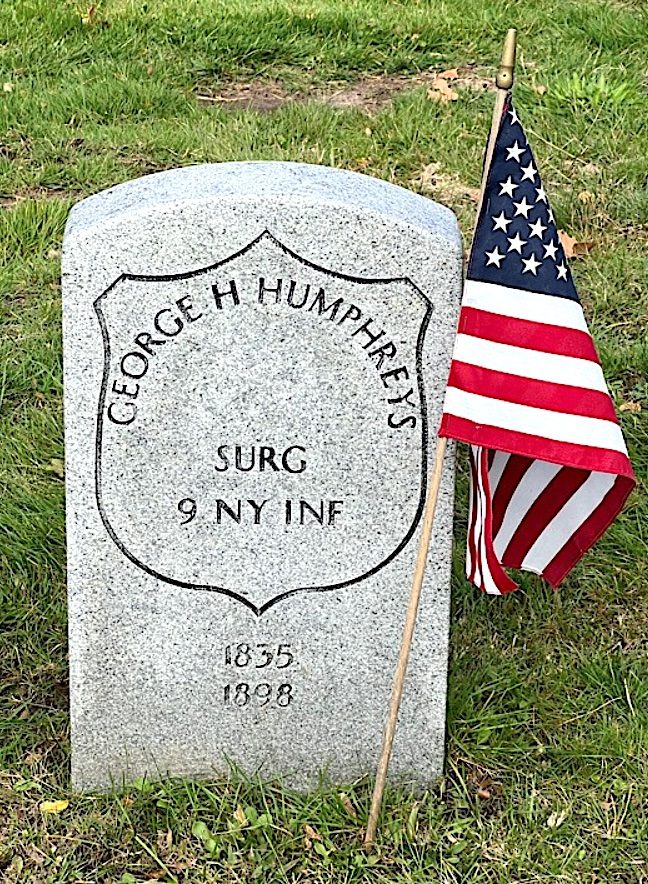
HUMPHREYS, ROBERT (or WILLIAM) (1828-1872). Private, 12th New York Infantry, Companies C, F and D; 5th New York Veteran Infantry, Company F. Born in England, Humphreys enlisted on January 27, 1862, at New York City, and mustered into Company C of the 12th New York that same day. His muster roll notes that he was also borne on the rolls as William Humphreys. On February 26, 1862, he was transferred within the regiment to Company F, and then was transferred into Company D on June 23, 1863. On June 2, 1864, he transferred into the 5th New York Veterans. As per his obituary in the New York Herald, friends and relatives were invited to attend his funeral at his late residence. He last lived on Hancock Street in Jersey City, New Jersey. Humphreys died from asthenia, weakening of the muscles. Section 180, lot 12741.
HUMPHRIES (or HUMPHREYS), BENJAMIN (1828-1895). First sergeant, 173rd New York Infantry, Company E. Humphries was born in New York. After enlisting as a sergeant at Brooklyn on September 13, 1862, he mustered into the 173rd on October 30. His muster roll notes that he was a sash-maker by trade who was 5′ 6″ tall with black eyes, dark hair and a dark complexion. He was promoted to first sergeant on February 17, 1864, and mustered out at Savannah, Georgia, on October 18, 1865. As per the 1870 census, Humphries was living in Brooklyn and working as a journeyman sash and blind-maker. In 1890, his application for an invalid pension was granted, certificate 868,071. Humphries’s death certificate indicates that he was a widower. He last lived at 696 Gates Avenue in Brooklyn. His death was caused by cancer. Section A, lot 9146, grave 215.

HUNGERFORD, DANIEL ELIHU (1823-1896). Lieutenant colonel, 36th New York Infantry. Born in Frankfort, New York, Hungerford’s lineage in the United States can be traced back to ancestors who settled in Hartford, Connecticut, in 1628. However, his roots can be traced back to England, where his family had great wealth and influence dating from the 1300s. His mother, China Harrison, was a cousin of President William Henry Harrison; his father fought in the War of 1812. From 1840 through 1842, he attended military school and was commissioned captain of the 197th New York Regiment. He wrote numerous articles one of which advocated military instruction in public schools.
Hungerford served in the Mexican War; a tribute to his service was recognized by Ignatius Ingoldsby Murphy whose biography The Life of Colonel Daniel E. Hungerford (December 9, 1889) related the homage to Hungerford at a reunion dinner of Mexican War veterans on September 14, 1889, at the Hotel Continental in Paris. Murphy noted that Hungerford, like many in May 1846, were stirred by patriotic feelings and said to a crowd at the American Hall in New York City, “Are we to content ourselves by sympathetic words? Has not the time for action come? Will we haul down our flag, and shamelessly retreat while there are thousands of men here able to prevent it? Our fathers did not do that in 1812. Let us show that we are as good patriots as they.” (p. 58) One hundred and fifteen men answered the call to action and after an ad was placed in the New York Sun in which Hungerford offered to captain the regiment, or serve with a musket at the front; the men unanimously elected him captain. On June 4, 1846, his unit joined the 1st New York but ultimately, he did not muster in until December 9, 1846.
Murphy noted that Hungerford was known for his honesty, self-discipline and knowledge of military rules and tactics. Of the time in Mexico, he wrote to his brother on March 7, 1848, of his experiences. He wrote that he departed from Fort Hamilton in New York Harbor on January 3, 1847, on the Isabella heading for Vera Cruz where the men disembarked on March 9; the Mexicans were not expecting a landing there and the flag of the Empire State was soon planted there. Hungerford wrote of that sight, “…The bright, glowing colors of our state standard seemed as if rivaling the effulgent rays of the rainbow, as it took the gentle breeze, and loosened its folds to the free breath of the heavens…” ( p. 69) His letter described the extent of that battle culminating in capitulation on March 29 with Vera Cruz in ruins, demonstrating the United States’ “superiority in the art and science of war”; the victorious troops then helped restore the public buildings and businesses. He recalled that the men in his unit labored that April with heavy loads, little water, and with the anticipation of battle, developed superhuman strength as they approached and took Cerro Gordo. (p. 87) His letter goes on to describe the beauty of the city of Puebla, his admiration for General Winfield Scott at Contreras, the difficult Battles of Churubusco, Molino Del Rey, Chapultepec and Mexico City (he was cited for gallantry in the latter two battles). He ended his letter by noting that he did not use the word “I” by explaining that “…I have always preferred to let my actions and the official records speak for me.” (p. 112) Hungerford, who suffered an injury to his shoulder blade during the conflict, left New York with eighty-three men and four officers; he returned with fourteen men (some had returned home before the end of the fighting) and two officers. (p. 116)
In another letter to his brother on February 14, 1848, he wrote that he feared that the Mexican government was not ready for peace; the internal struggles were too great. Hungerford, a humble man, was praised for his humane treatment of prisoners of war. (p. 148). When the troops returned home and arrived at Fort Hamilton on July 27, 1848, they were given a rousing welcome by the people of New York. Thousands filled the streets but the tattered flags, torn uniforms and missing gaps in the regiment told the tale of the returning heroes. They were welcomed by Mayor Havemeyer and cheered as citizen-solders. (pp 147-148) In 1849, he set out for gold in California, an arduous journey of six months that took him to Mexico, aboard a small boat, and then a journey by land with a small group of men. He found work on the docks of San Francisco, then opened a general store there. By 1851, he accumulated a small sum of money through various trades and with a doctor, engaged in the drug business, taking care of the commercial accounts. For five years, he continued that partnership while studying medicine and also organizing the Sierra Guards, part of the State Militia, and was soon elected major of the Sierra Battalion. On January 8, 1855, he was awarded a presentation sword as a token of esteem from the Sierra Battalion which was inscribed with the battles in which he fought in the Mexican War. At the ceremony, these words were spoken:
…This blade is of true steel; and in the day of trial, hereafter as before, be true as steel to your friends and country. The blade is bright, so were your own brave deeds on the battlefields of Mexico, in behalf of that proud banner of our Republic. It is bright, so is the recollection of your services in the hearts of your comrades in arms, and of those who on this day surround you….The hilt of this good sword is bound with silver…, the scabbard is gilded with the glow of the most precious of metals, so may your own deeds untarnished glow with golden light…(pp. 168-169)
In 1860, he was in the Utah Territory when an Indian massacre took place. He asked for help from the Sierra Battalion and was soon leading his men who became part of the Territory’s Regiment under Colonel John C. Hays. On July 1, 1860, he resigned his position. Hungerford also served in the Civil War. According to Murphy, he left by train to San Francisco from the Sierra Nevada after First Bull Run, on August 16, 1861, telling his wife, “I am going to Washington to join the Army.” (p. 195) He then took the Pacific Mail Steamer to New York via Panama, and joined his regiment within forty-eight hours of debarking on September 15. After enlisting on September 17, 1861, at Washington, D.C., he was commissioned into the 36th New York as its lieutenant colonel. On October 7, 1861, he wrote to his wife that he had suffered from dysentery, had a tremendous boil after riding for fifteen hours without dismounting, and was currently suffering from a strained knee and leg. (p. 197) A month later, on November 4, he wrote to his wife that he had been detailed to the Board of Military Examiners to examine volunteer officers to ascertain their competence at fitness for duty. (p. 199) In a letter to his brother on November 9, he wrote in part:
I am not a Republican and I did not vote for Abraham Lincoln, but he is the President of the United States, the Chief Magistrate of my country, and as an honest American citizen, loving his country’s institutions, I am bound to sustain him and his administration. In so doing I lose none of my rights as a citizen. I am sustaining the principles of true republicanism.
I regret as much as anyone can this war, but it is upon us; we must not stop to inquire who or what was the cause of it, or at whose door, if any, the fault must be laid. It is our duty—as we love our country, as we love the principles of self-government—to fight it out, if we have to shed the last drop of blood in our bodies to do it. (pp. 204-205)
With his knowledge of medicine, he helped the surgeon vaccinate the troops against a smallpox outbreak in December 1861. In February 1862, he wrote to his wife that he was leaving the Washington area and was most proud of his reputation as a strict disciplinarian. Eager to enter the battlefield, and accepting of the scarce comforts that actual fighting entails, he was eager to go to the front, at last, in April 1862. His feelings about patriotism were expressed in a letter from Yorktown, Virginia, in April 1862, “…I would not give a fig for a million soldiers who would only do their duty and no more….” (p. 242) He commanded the 36th during the Peninsula Campaign in Virginia at the Battles of Seven Pines, Fair Oaks, Seven Days, Oak Grove and Malvern Hill. In his field report from camp on June 5, 1862, Colonel Charles Innes, the commanding officer, praised Hungerford and noted that he “behaved with great gallantry and coolness throughout the engagement…” Murphy noted that Hungerford felt stymied at times at Fair Oaks when he did not receive orders but held together his regiment through his firm discipline and knowledge of artillery. He was discharged on July 6, 1862.
However, on August 25, 1862, he wrote to the governor of California hoping to go there and lead a regiment with the ultimate plan of invading Texas from the West; his letters asked for troops for Virginia, the governor did not support that request. Ever hopeful, he returned to the Nevada Territory where he raised a mounted infantry and was appointed its colonel; the plan never succeeded. Hungerford then turned to Louis Napoleon’s actions in Mexico; he planned to sail with 500 men from San Francisco and secretly join the Mexican Army to overthrow the usurper. That plan was foiled when a newspaperman confided the secret to the French consul and Hungerford and twenty-two of his officers were put to trial; Hungerford defended himself and was acquitted. He died in Rome, Italy, from a tumor of the liver. Section 125, lot 29275.
HUNT, RICHARD RIKER (1840-1925). First lieutenant, 71st Regiment, New York State National Guard, Company G. According to the sketch book of the 71st Regiment, Hunt, a native of New York City, joined the 71st in 1861 and was elected corporal that year. He returned in 1862 when he was commissioned second lieutenant. After re-enlisting at New York City as a first lieutenant on June 17, 1863, he was commissioned into the 71st Regiment’s National Guard on June 30, and mustered out the next month on July 22 at New York City. During the New York City Draft Riots in 1863, he was in command of a detachment at High Bridge (upper Manhattan). In the fall of 1863, he became a captain of his company and remained in that rank until his resignation in 1868. His last residence was in Port Chester, New York. His death was attributed to a cerebral hemorrhage. Section 114, lot 16955.
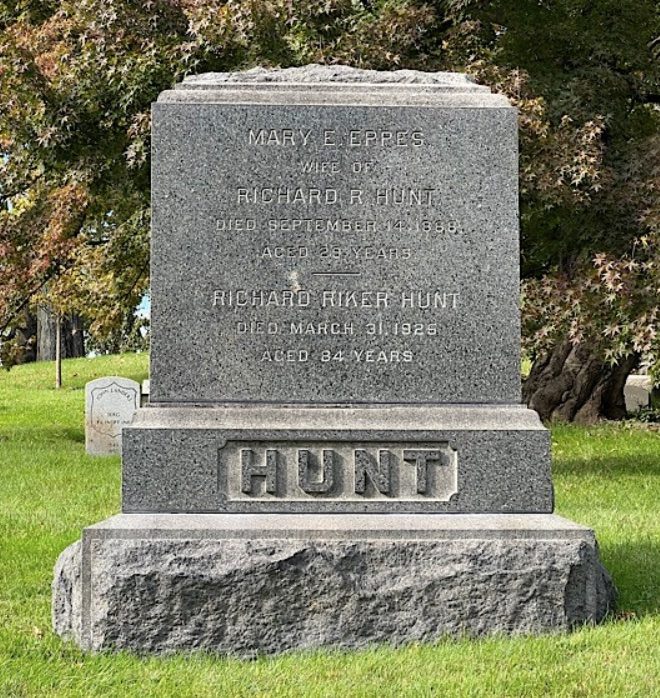
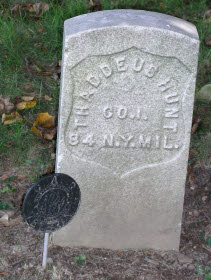
HUNT, THADDEUS (1846-1912). Private, 84th Regiment, New York State National Guard, Company I. A native of New York, Thaddeus served in 84th New York State National Guard for 100 days in 1864. In 1891, his application for an invalid pension was granted, certificate 781,080. He last lived at 2860 8th Avenue in Manhattan. After his death from a carcinoma, Sarah Hunt, who is interred with him, applied for and received a widow’s pension in 1912, certificate 750,025. Section 189, lot 16464, grave 2.
HUNTER, ALEXANDER (1843-1888). Private, 13th Regiment, New York State Militia, Company A; 1st New York Mounted Rifles, Companies G and H. Born in Ireland, the 1860 census reports that Hunter lived in Brookyn. During the Civil War, he enlisted as a private on April 19, 1861, at New York City, and mustered into the 13th Regiment. He was discharged from service three months later. On July 9, 1862, he re-enlisted at New York City as a private and mustered into the 1st New York Mounted Rifles a month later. As per his muster roll, he was a salesman who was 5′ 8″ tall with hazel eyes, dark hair and a fair complexion. During the course of his service, he transferred from Company G to Company H. He was discharged on April 3, 1863.
After the Civil War, Hunter was a member of Rankin Post #10 of the Grand Army of the Republic (G.A.R.) in Brooklyn, joining on May 10, 1877. The 1880 census notes that he lived with wife and three children at 67 Sands Street in Brooklyn and was employed as a wine merchant. He applied for and received an invalid pension in 1887, certificate 389,085. As per his obituary in the Brooklyn Daily Eagle, which confirms his Civil War service but puzzlingly notes that he was a veteran of the 14th Regiment and a member of the Engineers’ Corps of General McClellan’s staff (neither of which is confirmed by other documents), Hunter contracted malarial fever at the time of the Battle of Chickahominy from which he never recovered. The obituary also notes that he had been in the liquor business for eighteen years on Fulton Street, succeeding his uncle. Another article in the Brooklyn Daily Eagle about Hunter’s funeral notes that the services were “largely attended.” Masonic services were held at the cemetery; Hunter had been a past commander of Knights Templar. In addition, members of the Fountain Gun Club, the St. Patrick’s Society, 14th Regiment, Company K and G.A.R. comrades were in attendance. His last residence was 5 Poplar Street in Brooklyn. The cause of his death was cirrhosis and heart trouble. His wife’s application for a widow’s pension was approved, certificate 293,586. Section 193, lot 24815.
HUNTER, CHARLES H. (?-?). Second lieutenant, 23rd Regiment, New York State National Guard, Company A. Hunter was commissioned into the 23rd on June 18, 1863, and mustered out on July 22, 1863, at Brooklyn. Section ?, lot ?.
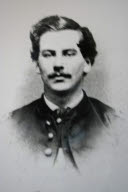
HUNTER, CHARLES T. (1841-1864). First lieutenant, 134th New York Infantry, Companies I and E. A native of Conesville, New York, in Schoharie County, Hunter worked on his family’s farm and then became a schoolteacher. During the Civil War, he enlisted as a private on September 5, 1862, at Conesville, New York, and mustered into Company I of the 134th New York on September 12. He was 5′ 11″ tall with blue eyes, brown hair and a dark complexion. Rising through the ranks, he was promoted to sergeant on September 23, 1862, to second lieutenant on April 22, 1863, effective upon his transfer to Company E, and to first lieutenant on July 1, 1863. As per his obituary in the Schoharie Republican on March 24, 1864, he was chosen as one of the officers of the general court martial of New York and was the chief commander of the steamer United States which was used to transport volunteers.
He drowned on March 11, 1864, at North River, New York. The Schoharie Republican reported that he was in small rowboat with seven women, one child and two boatmen attempting to cross the East River to Riker’s Island when the boat lurched and half-filled with water. Hunter tried to bail out the water but a strong gale frightened the women who all moved to the other side of the boat, capsizing it and falling into the waters. Hunter, who first swam to shore, returned to assist the others but was unable to stay above the surface of the water. Hunter and six other passengers died in the accident. According to the author of A Crooked Gun, a book about Schoharie’s men who died in the Civil War, it was first reported in the New York Herald on March 12 that Hunter “was intoxicated, and that his conduct while in the boat tended greatly to produce the catastrophe.” However, that allegation was soon overturned on March 13, 1864, after it was learned that the boatmen tried to blame Hunter to avoid being censured for the accident. The New York Times also noted on March 26, 1864, that Hunter was absolved of all charges of intoxication. On May 31, 1864, Hunter’s body was found by a fisherman and recovered about six miles from the accident. An inquest took place before his brother, Alexander Hunter, a physician, took charge of the body and arranged for burial. Zilpha Hunter applied on May 23, 1864, for a widow’s pension: it was granted under certificate 55,652. In support of her application, Hunter’s captain and commanding officer attested that Charles Hunter was in the line of duty when the accident occurred. He was reporting to Riker’s Island after returning to New York from Washington, D.C., and Alexandria, Virginia, after transferring recruits. Hunter was ordered to “report without delay” to the rendezvous area. Mrs. Hunter’s pension of $17 a month continued until her re-marriage in 1867; her pension resumed after her second husband’s death in 1901 at the same stipend, rising to $25 a month shortly before her death in 1907. The Altamount Enterprise & Albany County Post reported on April 11, 2013, that Peter Lindemann spoke about Hunter’s untimely death and other local Civil War soldiers at the Gilboa Town Hall. Section 175, lot 23201.
HUNTER, HENRY CHRISTIE (1847-1881). Midshipman, United States Naval Academy. Hunter, who was born in Brooklyn, was the son of Brooklyn’s Mayor John W. Hunter (1874-1875). He entered the United States Naval Academy at Annapolis, Maryland, as a midshipman on September 3, 1863, and graduated from the Academy on June 6, 1867, at which time he was promoted to ensign. On March 21, 1870, he was promoted to master and became a lieutenant on March 21, 1871. On June 10, 1881, he died off the coast of Yokohama, Japan, and was interred at Green-Wood on October 22, 1881. Section 153, lot 23528.
HUNTER, ROBERT (1805-1866). Sailmaker, United States Navy. He entered the Navy on July 12, 1845, served at sea for almost 14 years, was on shore duty for almost three years, spending over 20 years in the service. He died at New York while attached to the Vermont, a receiving ship. His last residence was 189 Duffield Street, Brooklyn. His widow, Jane Hunter, was awarded a pension in November, 1866. In her pension application, it was noted that his death from erysipelas, a skin condition, was contracted during his service prompted by exposure during picket duty in the winter of 1865-66. Section 183, lot 19239.
HUNTER, WILLIAM RYERSON (1840-1920). Captain, 13th Regiment, New York State Militia, Company G. Born in Brooklyn, he enlisted there as a private on April 23, 1861, mustered into the 13th Regiment on May 14, and mustered out on August 6 at Brooklyn. When his regiment was reactivated and part of the National Guard a year later, he re-enlisted as a sergeant on May 28, served three months, and mustered out at Brooklyn on September 12. In 1863, he served again with the 13th for 30 days, being commissioned as a captain on July 21. His military service was confirmed by the Veterans Schedule of 1890. A member of the G.A.R., Hunter last lived at 156 Clinton Street in Brooklyn. He died from cancer. Section 95, lot 1040, grave 1521.
HURD (or HAND, HERD, HIRD), JOHN (1842-1916). Private, 10th New York Infantry, Company I. A New York City native, Hurd enlisted as a private on May 2, 1861, mustered into Company I of the 10th New York Infantry on June 26, and mustered out with his company at New York City at the expiration of his two year term on May 7, 1863. In 1904, Hurd applied for and received a pension, certificate 1,082,310. As per his death certificate, he was a widower and worked as a laborer. Hurd last lived at 154 Gold Street in Brooklyn. He died from uremic coma (kidney failure). Although Green-Wood records and his death certificate state that he died in Brooklyn, his pension index reports that he died in Jersey City, New Jersey. Section 174, lot 17493, grave 1.
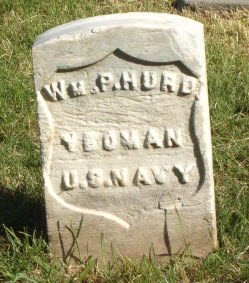
HURD, WILLIAM P. (1841-1908). Yeoman, United States Navy. Born in Sparta, New Jersey, Hurd served as a yeoman in the United States Navy during the Civil War. This data was inscribed on his government-issued gravestone that dates to early in the 20th century. His last residence was 139 Madison Avenue in Manhattan. Section 81, lot 2504, grave 4.
HURLEY (or HARLEY), JOHN (1817-1863). Assistant surgeon, 53th New York Infantry; 155th New York Infantry; 69th New York Infantry. A native of County Cork, Ireland, Hurley enlisted as an assistant surgeon on August 27, 1862, and was commissioned into the Field and Staff of the 53rd New York. As per his muster roll, which notes that he was also borne on the rolls as John Harley, he was a physician who was 5′ 10″ tall with blue eyes, black hair and a fair complexion. He was transferred into the Field and Staff of the 155th New York on November 8 of that year. On December 1, he mustered out and was immediately commissioned into the Field and Staff of the 69th New York where he served until he died on or about April 14, 1863, at Falmouth, Virginia. His obituary notes that he died in camp from congestion of the brain while, according to another report, he was accidentally killed in the movements preceding the Battle of Chancellorsville. His soldier record states that he was killed after being thrown from his horse at Regimental Camp.
The case for the widow’s pension was fraught with controversy. On May 28, 1863, Caroline Hurley, “contest widow,” applied for a pension, application 22,704, but it was never certified. A marriage record indicates that Caroline Taylor and John Hurley were married at the Methodist Episcopal Church on Allen Street in New York City on November 24, 1844. In letters asking for a pension, Caroline Hurley wrote that her husband apparently got a divorce from the state of Indiana but had never informed her of it. On September 3, 1863, Elizabeth Hurley applied for and received a widow’s pension, certificate 27,437. Further, John Hurley Junior, his son, asked for back pay and a pension due to his mother Caroline and not the “pretended wife.” The son wrote that he had hired a lawyer to begin proceedings against the “pretended wife” of John Hurley; apparently, the lawyer did not want to “touch the case” until all evidence was gathered. Originally interred in lot 4259 on April 22, 1863, his remains were removed to the present location on June 7, 1863. Section 181, lot 13991.
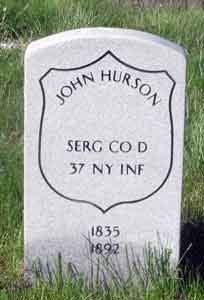
HURSON, JOHN (1842-1892). Sergeant, 37th New York Infantry, Company D. Born in Ireland, Hurson enlisted as a corporal at New York City on May 9, 1861, and mustered into the 37th on June 7. He was promoted to sergeant on October 16, 1862, and mustered out at New York City on June 22, 1863. According to the 1880 census, Hurson lived at 510 West 33rd Street with his wife Kate and four young children and was employed as a driver. His death certificate reports that he was married and worked as a clerk. He last lived in New York City. His wife applied for and received a widow’s pension in 1892, certificate 358,555, but an application for a minor’s pension in 1904, application 806,142, was not certified. Section 15, lot 17263, grave 772.
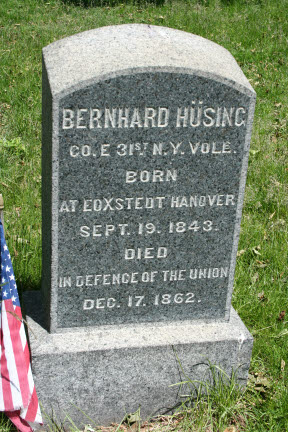
HÜSING (or HUSSING, HESSING), BERNHARD (or BERNARDT) (1843-1862). Private, 31st New York Infantry, Company E. Born in Hanover, Germany, he enlisted as a private at New York City on May 7, 1861, mustered into the 31st New York on May 27, and was listed as attached to gunboat service on February 18, 1862. He died of typhus fever in Galena, Illinois. A government-issued gravestone was placed to mark his grave circa 1900. Section 115, lot 13536 (Soldiers’ Lot), grave 57.
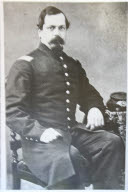
HUSON, WILLIAM (1822-1870). Captain, 12th Regiment, New York State Militia, Company B. Born in England, he enlisted at New York City on April 19, 1861, was commissioned in on May 2, and mustered out at New York City on August 5 of that year. He served in the same unit at a later date. Huson last lived in Manhattan; his death caused by a rupture. Section 67, lot 2270.
HUTCHINS, JAMES H. (1818-1866). Private, 67th New York Infantry, Company C. Born in Westchester County, New York, he enlisted on July 15, 1861, at Fort Schuyler, New York, as a private. Hutchins mustered into his company on August 31, and was discharged for disability on December 9, 1861, at Camp Palmer, Virginia. As per his obituary in the New York Herald, he succumbed to heart disease at Port Chester, New York. Section 13, lot 9866.
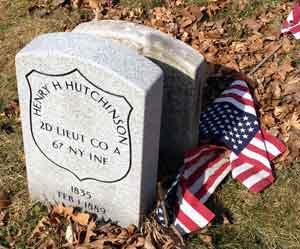
HUTCHINSON, HENRY HART (1835-1889). Second lieutenant, 67th New York Infantry, Company A. According to the 1880 census, Hutchinson was born in Connecticut; however, the 1870 census lists his birthplace as Massachusetts. After enlisting at Brooklyn as a private on May 14, 1861, and mustering into the 67th New York, also known as the 1st Long Island Volunteers, on June 20, Hutchinson rose to first sergeant on August 1, and to second lieutenant three months later on or about November 16. Apparently, he suffered an injury to his groin during the War that caused lingering health problems. He was discharged on January 20, 1862. His obituary in the New York Herald, which confirms his Civil War service, reports that Hutchinson re-enlisted in the 13th Regiment and went to the front under then Captain Thomas S. Dakin (see); Dakin subsequently became a major general. The details of his service in the 13th Regiment are not known.
The 1870 census shows a Henry Hutchinson, age 35, living in a boarding house in Manhattan; he was listed as a merchant. The Herald notes that through his friendship with the Beecher family, Hutchinson secured an appointment in the Navy Yard, a position that he held for twelve years. The 1880 census shows that he was single, lived with his elderly mother and siblings on Jefferson Street in Brooklyn and worked as a clerk in the Customs House. According to his obituary in the New York Herald, members of Dakin Post #206 of the G.A.R., and veterans of the 13th Regiment, 1st Long Island, and 67th New York attended his funeral. His last address was 128 Jefferson Avenue in Brooklyn. Although gastric enteritis is listed as the cause of his death, a notarized letter written by his brother states that the groin injury caused his demise. Section 115, lot 13536 (Soldiers’ Lot), grave 24.
HUTCHINSON, HUGH (1836-1903). Chief engineer, United States Revenue Marines. Hutchinson served as a chief engineer in the United States Revenue Marines. He was promoted to chief engineer on April 13, 1865, and resigned on October 19 of that year. Further details are unknown. His last residence was 138a Dean Street in Brooklyn. His death was caused by “insolation,” a type of sunstroke. Section 147, lot 21798, grave 2.
HUTCHINSON, THOMAS (1832-?). Private, 71st New York Infantry, Company F. Hutchinson enlisted at New York City on April 25, 1861, mustered in on June 22, and was wounded in action on November 15, 1862. He was discharged for disability on January 20, 1863, at Alexandria, Virginia. Section ?, lot ?.
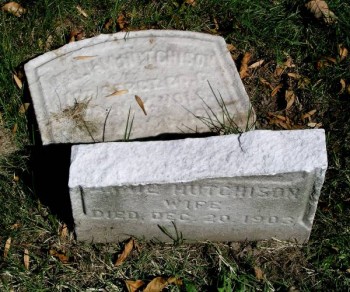
HUTCHISON (or HUTCHINSON), WILLIAM (1837-1902). First sergeant, 79th New York Infantry, Company C. Born in Ireland, he enlisted at New York City as a private on May 13, 1861, and mustered into the 79th New York on May 27. Although his muster roll has the name “Hutchinson,” it is noted that he was borne on the rolls as “Hutchison.” He was promoted to sergeant and first sergeant on unknown dates before mustering out on May 31, 1864, at New York City.
The 1870 census indicates that Hutchison lived in Brooklyn with his wife and two young children, worked as a plumber and had a personal estate valued at $700. In 1890, his application for an invalid pension was approved, certificate 685,976. His obituary in the New York Herald confirms his service in the 79th New York, also known as the Highlanders. According to his death certificate, he was married, worked as a plumber and last lived at 48 Oakland Street in Brooklyn. His death was attributed to apoplexy. Anna Hutchison, who is interred with him, applied for and received a widow’s pension, certificate 547,855. Section 136, lot 28070, grave 34.
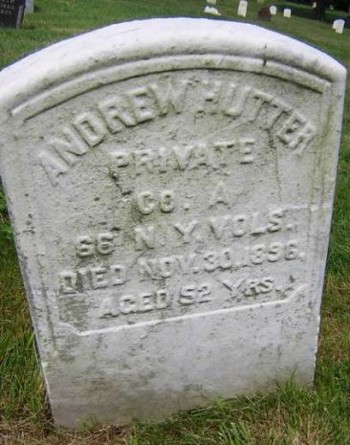
HUTTER (or HUTER, HATTER), ANDREW (1844-1896). Private, 66th New York Infantry, Company A; 10th Veteran Reserve Corps, Company B. A native of Germany, he enlisted as a private at New York City on September 10, 1861, and mustered into the 66th New York on November 4. He re-enlisted on December 20, 1863, was wounded at Cold Harbor, Virginia, on June 6, 1864; his injury was reported in The New York Times. Hutter transferred into the 10th Veteran Reserve Corps on January 1, 1865, and mustered out on August 22 at Washington, D.C. On September 7, 1865, he applied for and received an invalid pension, certificate 61,485.
The 1880 census reports that Hutter was married, lived at 786 Third Avenue in Brooklyn with his wife and four young children. He noted that he was a laborer but had not worked in six months because he was disabled by rheumatism; he also noted that he could not read or write. At the time of his death from Bright’s disease, he was married and lived at 808 Third Avenue in Brooklyn. His wife applied for and received a widow’s pension, certificate 443,821. Section 126, lot 16873, grave 26.
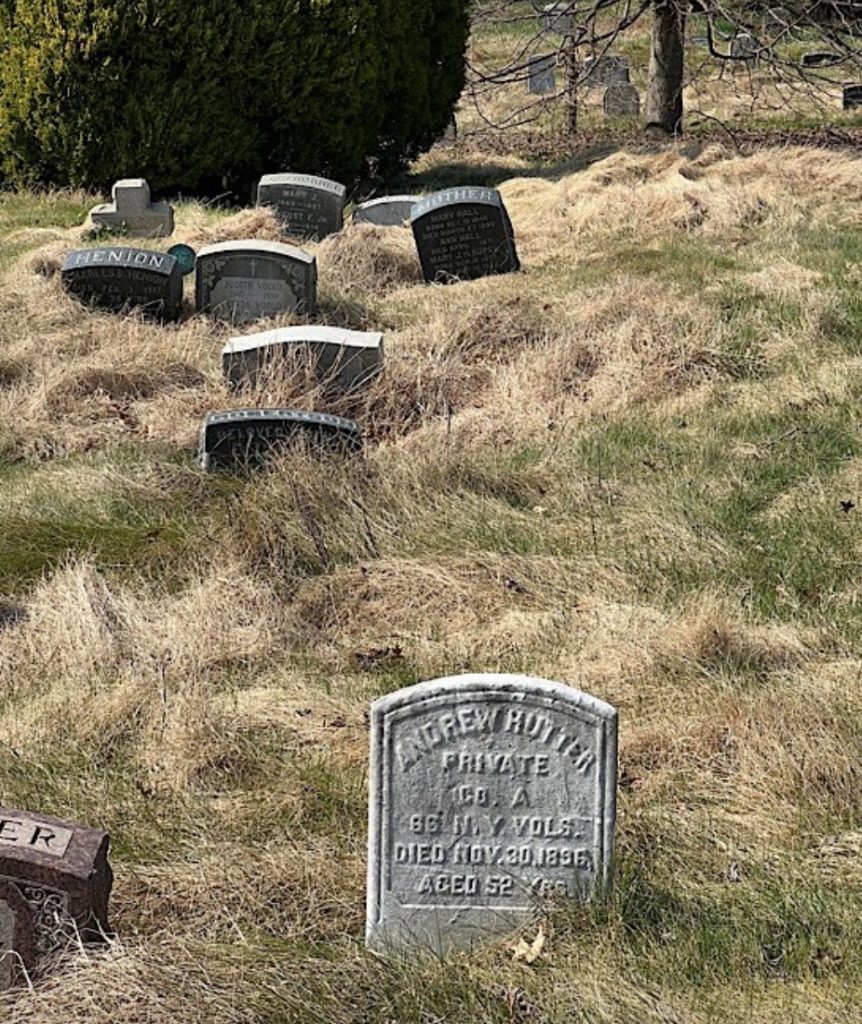
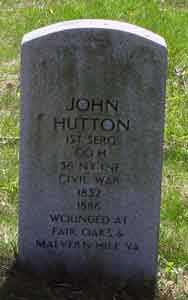
HUTTON, JOHN (1832-1886). First sergeant, 36th New York Infantry, Company H. A native of New York City, Hutton enlisted there as a private on July 10, 1861, and mustered into the 36th on that date. He rose to corporal on November 16, 1861, and to sergeant on January 28, 1862. Hutton was wounded in action at Fair Oaks, Virginia, on June 1, 1862, and a month later was wounded at Malvern Hill, Virginia, on July 1. He rose to first sergeant on November 1 of that year. On July 15, 1863, he mustered out with his company at New York City. A keepsake wine bottle that Hutton brought back from the War became a family memento. As per his death certificate, Hutton was married and worked as a carpenter. His last address was 158 East 112th Street in Manhattan. He succumbed to heart disease. In 1888, his widow, Emaline Hutton, applied for a pension, application 383,545, but there is no certification number indicating that it was granted. Section 121, lot 11189, grave 190.
HUTTON, WILLIAM S. (1841-1880). Private, 9th New York Infantry, Company I. Hutton enlisted as a private on August 22, 1861, at New York City, and mustered into the 9th New York the same day. He was discharged for disability on June 30, 1862, at Roanoke Island, North Carolina. At the time of his death, caused by apoplexy, he lived at 108 McDougal Street in Manhattan. Section 6, lot 12440.